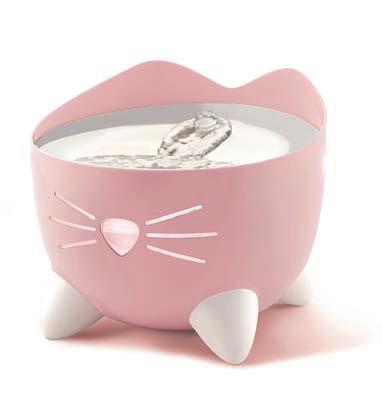











































































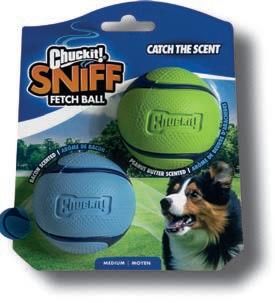



























www.flexi.de/en









































































































www.flexi.de/en
This month is a double issue! There won’t be an issue dropping through your door in April but don’t fear, we have so much great content for you in this magazine.
To start, PPM is all about bringing you the latest products to hit the market. We have four pages of brilliant new products — check them out and see if you can find a great seller for your store.
We also delve into what it means to be able to sell animal medicines as a Suitably Qualified Person. Gaining the qualification to be able to sell certain medications could add a real effective revenue stream to your business. It is certainly something to consider if you’re not already.
We’ve also provided you with some more social media advice. This issue,
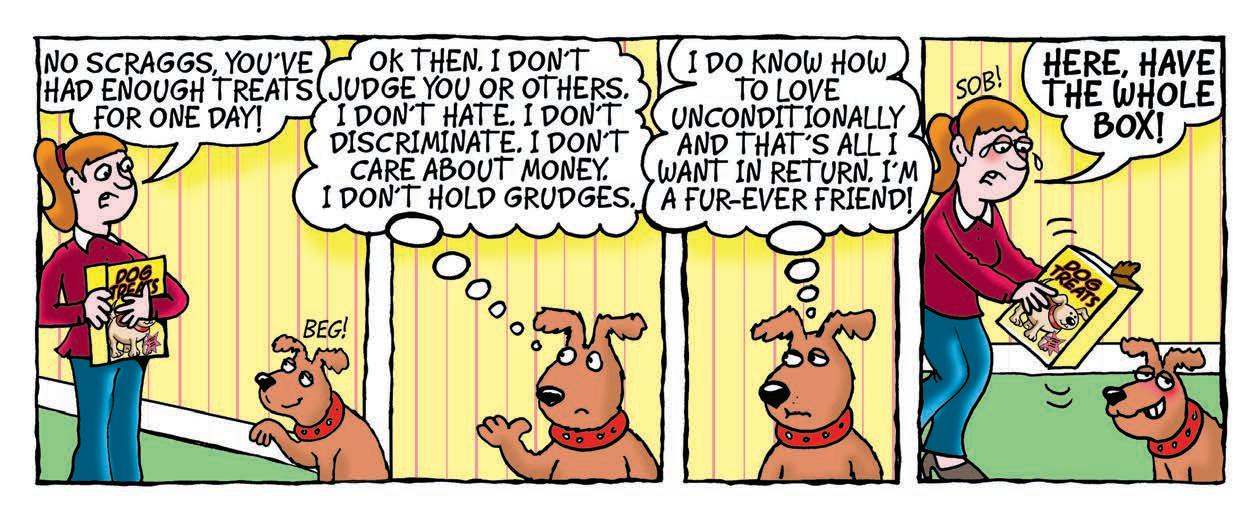
4 News
There is a lot going
we look at going on holiday with your dog. So many owners will be preparing to go away with their pet, so we have given you a host of tips that you are free to share on social media. Please do feel free to use them and let us know if you find this useful!
Finally, of course, we have lots of pet advice, as well as business advice! We’ll see you for the next issue in May!
MikeMike Hallam - Editor, PPM. michael.hallam@warnersgroup.co.ukOur email: editorial@petproductmarketing.co.uk
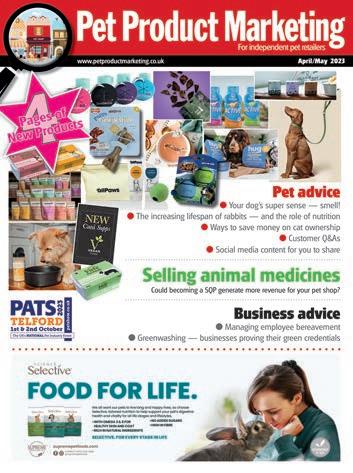
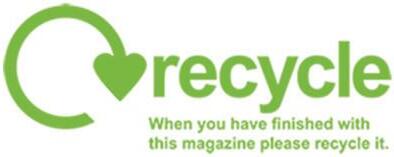
Our address: Pet Product Marketing, Warners Group Publications, The Maltings, West Street, Bourne, Lincolnshire, PE10 9PH
Michael Hallam, editor (for news and product releases, contact Michael on michael.hallam@warnersgroup.co.uk)
For advertising queries please contact Stephen Tanner on 01778 392404
Laura Wright, features and web editor Ellis O’Connell, marketing exec
With grateful thanks to Sarah Wright (editor, Your Dog), and Nathan Hill (editor, Practical Fishkeeping)
Nigel Fish, design and production manager
Natalie Reynolds, production controller Graham Warren, colour repro
Stephen Tanner, key account manager (advertising Pet Product Marketing/Practical Fishkeeping)

Andrea Walters, key account manager (advertising Your Dog/Your Cat)
Kay Cotterill, classified sales (all titles)


Regular contributors: Adam Bernstein, Claire Hamblion and John Courteney-Smith
Printed by Warners Midlands plc James Buzzel, publisher Subscriptions and back issues
Pet Product Marketing is available free to people who qualify for our controlled terms of circulation. If you’d like to register for a free subscription, please visit www.petproductmarketing.co.uk

us
own original work or that you have permission from
copyright owner to use the material and to authorise Warners Group Publications to use it as described in this paragraph. You also promise that you have permission from anyone featured or referred to in the submitted material to it being used by Warners Group Publications. If Warners Group Publications receives a claim from a copyright owner or a person featured in any material you have sent us, we will inform that person that you have granted us permission to use the relevant material and you will be responsible for paying any amounts due to the copyright owner. We cannot accept responsibility for unsolicited manuscripts, images, or materials lost or damaged in the post. While every reasonable care is taken to ensure accuracy, the publisher is not responsible for any errors or omissions, nor do we accept any liability for any loss or damage, however caused, resulting from the use of the magazine.
OSCAR Pet Foods has launched another exciting development for their franchise businesses.
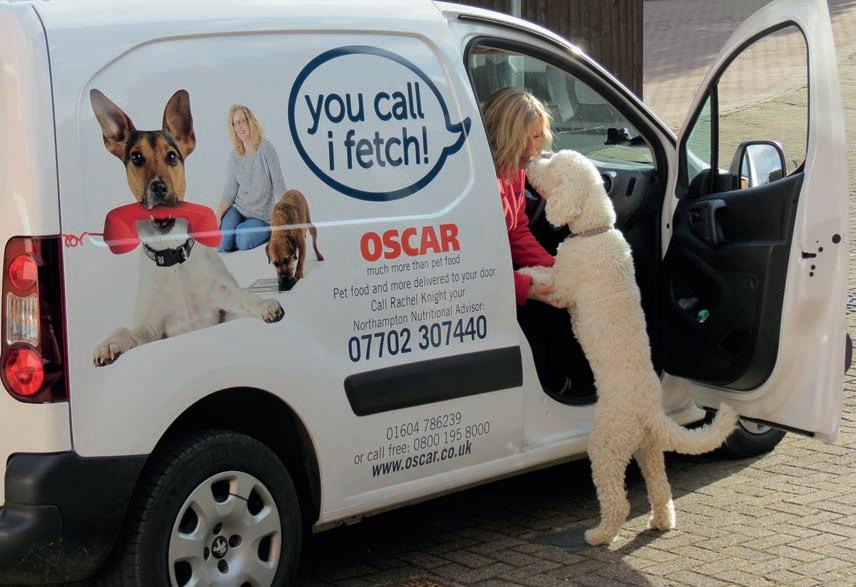
When starting a new franchise business, it is essential to be visible in the local area, promoting OSCAR products and services.
Shows and local events are fantastic ways to promote and market an OSCAR franchise. It’s a chance to talk directly to potential customers and raise brand awareness in an exclusive territory.
To enhance the business launch, OSCAR will:
● Provide a local show planner giving details and links to forthcoming events in the area.
● Book and pay for the first local show (up to the value of £150).
● Provide a show package, including show banners, A-frame, posters and marketing material.
● Arrange for an OSCAR field trainer to facilitate at a show — to encourage, support and provide effective training
Supported by trained and experienced mentors, OSCAR is a tried and tested system that ensures franchisees will be suitably qualified to understand and promote the products and services offered to the customer.
From large country shows to small local events, such as dog shows, fetes and farmers’ markets, OSCAR franchisees enjoy the freedom to showcase a wide range of products and nutritional expertise.
To find out more about business opportunities with OSCAR call 0800 068 1106 or visit oscar.co.uk.
PetQuip is running the British Pavilion at Zoomark in Bologna, Italy on 15-17 May, supporting businesses in their continued export drives.
The UK exhibitor group also features the PetQuip industry information stand and meeting point, where the multi-lingual PetQuip team will be promoting British pet product innovations and suppliers, and meeting international buyers on the stand.

The team will be ensuring that Great Britain’s place as a professional nation of top-class pet product suppliers is recognised by international pet product retailers and distributors.
If you haven’t yet decided to take part in the UK pavilion, there is still time to be part of the exhibitor group: PetQuip has secured space to accommodate those of you who haven’t been able to plan your exhibition presence until now.
The new areas will be snapped up quickly so do make sure you get in touch if you would like to showcase your products to attendees at one of the best international exhibitions in the show calendar.
Their exhibitors to date include industry stalwarts Burns Pet Nutrition, Canagan, Vitalin, Hugo Kamishi, CSI Urine, Kompact 9, Eden Holistic Pet foods, Animology, PATS and Aqua, James & Steel Ltd / Canny Collar, JG Pears, McAdams Free Range Pet Foods, Pets Choice, Petlife International Ltd, Poochiful, ProFleece - Simply2 Pet Products, Tribal Pet Foods, Symply, We.pet and Yora Pet Foods for the Planet.
Contact Emma Brazier on emma@petquip.com or Pat Flynn on pat@petquip.com for more details about the show and the comprehensive range of logistical and marketing support you receive when you exhibit with PetQuip.
ADM has opened a more than $30 Million state-of-the-art production facility.
One of the world’s leaders in science-backed nutrition solutions, announced it has opened a new production facility in Valencia, Spain to help meet rising global demand for probiotics, postbiotics and other products that support health and well-being. The production facility represents an investment north of $30 million and a more than five-fold increase in ADM’s production capacity, increasing it to 50 metric tons per year.
The facility will allow ADM to supply growing markets for probiotics and postbiotics in the U.S., Asia-Pacific and Europe.
The facility, the world’s first to produce both probiotics and postbiotics at the same site, will help the company fulfill its expansion strategy in the health and well-being sector. ADM is on its way to realising its ambition to increase health and wellness revenue from over $500 million in 2022 to $2 billion within 10 years.
Market research estimates that the probiotic supplements retail market could surge to $10.4 billion by 2027 from about $8.3 billion in 2021. That growth is being driven by rising demand for science-based probiotic formulas that are used in dietary supplements, and also dairy products, food, healthy snacks and beverages, as well as pet and animal well-being products. Learn more at www.adm.com.





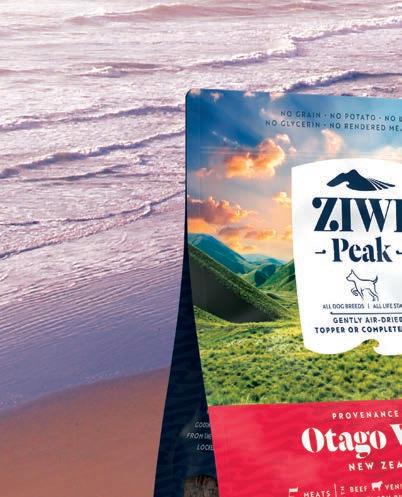
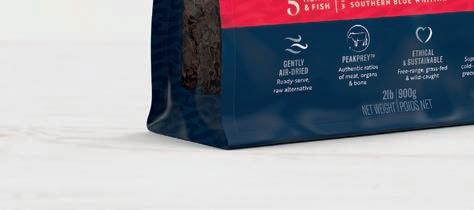



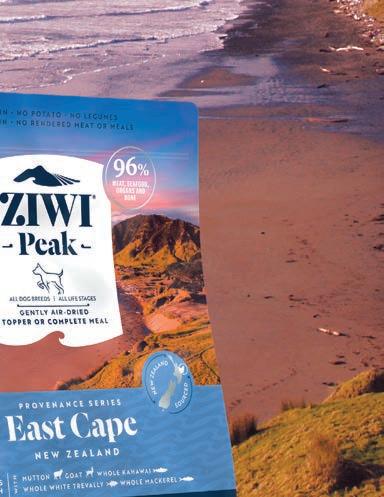
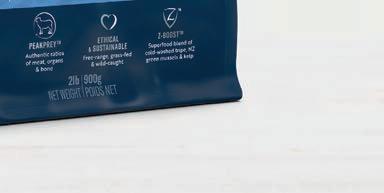




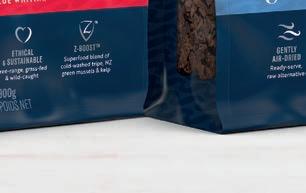




Leading raw dog food brand Paleo Ridge has launched its new ‘Donate Raw to Paws in Need’ initiative. This gives customers the online option to make a charitable donation of £4.55, the equivalent of 1kg of raw dog food. Each donation made will be doubled at no extra cost by Paleo Ridge, with the aim of providing an abundance of healthy, nutritious meals to dogs in need.
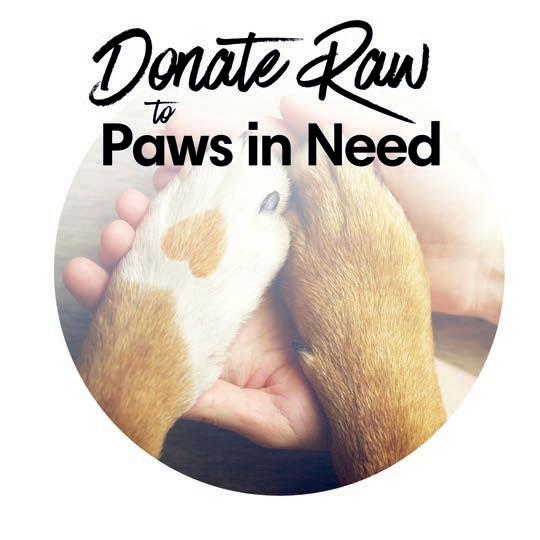
Paleo Ridge is teaming up with various UK shelters to organise raw dog food deliveries to ensure hundreds of dogs are well fed. This includes the brands long-term charity partner Many Tears Rescue. The company is also inviting customers to nominate other charities via the Paleo Ridge social media channels.
Esther Logue, Content and Communications Manager of Paleo Ridge, said: “Charities have seen a huge influx in unwanted pups, which of course comes with the need to fund many more mouths to feed. We are very excited to be working with animal charities on the Donate Raw to Paws in Need campaign. Having worked with Many Tears Rescue for over 6 years, we look forward to continuing to partnership with them and introduce new partners too, thus helping hundreds more dogs around the UK have access to species appropriate food.”
International cat fencing specialist ProtectaPet has donated a cat enclosure — which would normally retail at £2,384 — to Staffordshirebased cat rescue Iris’s Cats in Need.
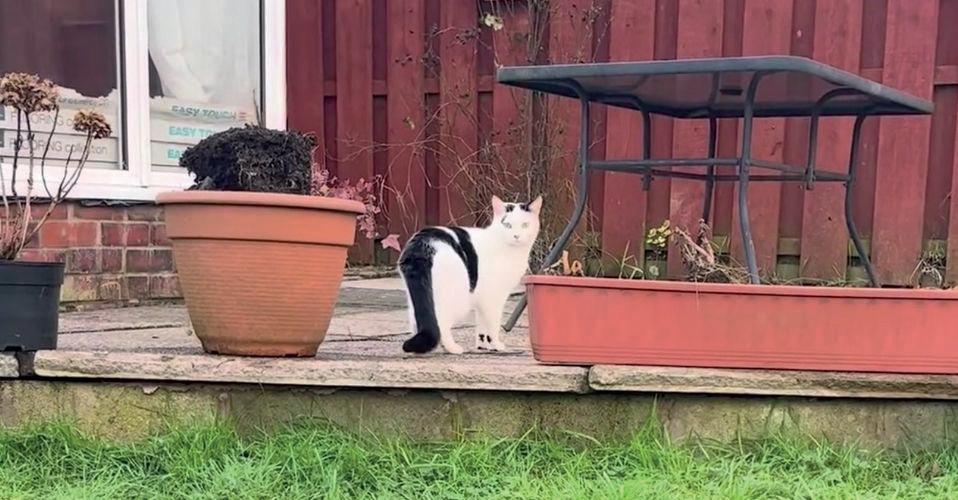
The cat enclosure, which was professionally installed by ProtectaPet-trained Installation Engineers, cat proofs the perimeter of ‘Superfosterer’ Claire Jones’ Garden. The cat enclosure will provide multiple cats and kittens with the opportunity to explore the outdoors in safety while they are temporarily cared for by Claire, awaiting placement in their ‘furever’ home.
Claire Jones, who has volunteered at Iris’s Cats in Need for over fifteen years, has a range of responsibilities at the Rescue, from hand-rearing kittens through to caring for poorly cats who might not otherwise be able to lead fulfilled lives. She says: “The ProtectaPet cat enclosure has made such a difference to mine and the cats’ lives. I couldn’t let them out before because they could get injured
or lost. Now look at them! Waiting at the backdoor, so excited to get outdoors, playing and enjoying the fresh air!”
ProtectaPet launched the £10k value cat fencing as a pot of resources for ‘Superfosterers’ to apply to, with the chance to become one of four winners. There were just shy of 60 worthy applicants who merited support and recognition for their invaluable care of unowned cats. Feline welfare charity International Cat Care undertook the difficult task of shortlisting the applicants throughout December. The judges focused on the value of the proposed project, and the quality of care and the impact that the cat fencing installation would have on the cats’ and Superfosters’ lives.
Eve Davies, Co-Founder and Director, says: “Iris’s Cats in Need has a special place in our heart for several reasons. We adopted Lola, a rescue kitten, from Iris’s Cats in Need in 2007. It was her premature death in a road traffic collision that inspired the designs and vision behind ProtectaPet. As a result, Iris’s Cats in Need was the first charity to become affiliated with ProtectaPet; they handed out our leaflets in adoption packs from the very inception of the company. The fabulous team there have fully endorsed us from the beginning, sharing our ambition for safe outdoor cat territories. We are grateful to them for all their support and for all the hard work they undertake to look after unowned cats in Staffordshire.”
For more information, visit protectapet.com








The Pet Industry Federation has launched a completely new event, The Business of Pets, designed to help pet businesses take that vital step to the next level.

A two-day conference, this new event will take place on Wednesday 7th and Thursday 8th June at the purpose built Cranfield Management Development Centre near Milton Keynes and will have a full itinerary of inspirational and insightful speakers; from angel investors to key distributors, from IP experts to legal advisors and mentors who have been there, done it and are happy to share the lessons learned on the way.
Another key element of this new conference is the Innovation of the Year Award — entry is open to all businesses in the pet sector, including product, service, or tech. A judging panel will select 10 finalists who will then have the opportunity to present their innovation at the event, giving them unprecedented access to potential investors. The winner will be chosen on the final day of the event.


Nigel Baker, CEO of PIF, commented: “We often hear from our members that they want to take their business to the next level but don’t have either the time, finance, or support structure to enable them to do so. We have created The Business of Pets conference to help solve this problem and have curated a fantastic roster of speakers who will be able to inspire attendees to move forward profitably. I’m sure that these two days of learning and networking will prove invaluable for the business owners, directors and decision makers who attend.
“I would also encourage all pet business innovators to enter the Innovation of the Year Award; the 10 finalists will have a unique opportunity to pitch to potential investors during the two day Business of Pets conference.”
For more information, to buy tickets to The Business of Pets conference, and to enter the Innovation of the Year Award visit petfederation.co.uk/the-business-of-pets-conference
To join PIF and take advantage of all the great business benefits that are available to PIF members, including a legal helpline, fuel card, IT discounts from Dell, and local authority help and advice, please visit www.petfederation.co.uk/

Paramount Retail Group (PRG) has announced the acquisition of four major online retailers: Fetch, Medic Animal, Pet Supermarket, and Pet Meds alongside two petfood brands: Bob & Lush and K9 Choice from Paws Group.
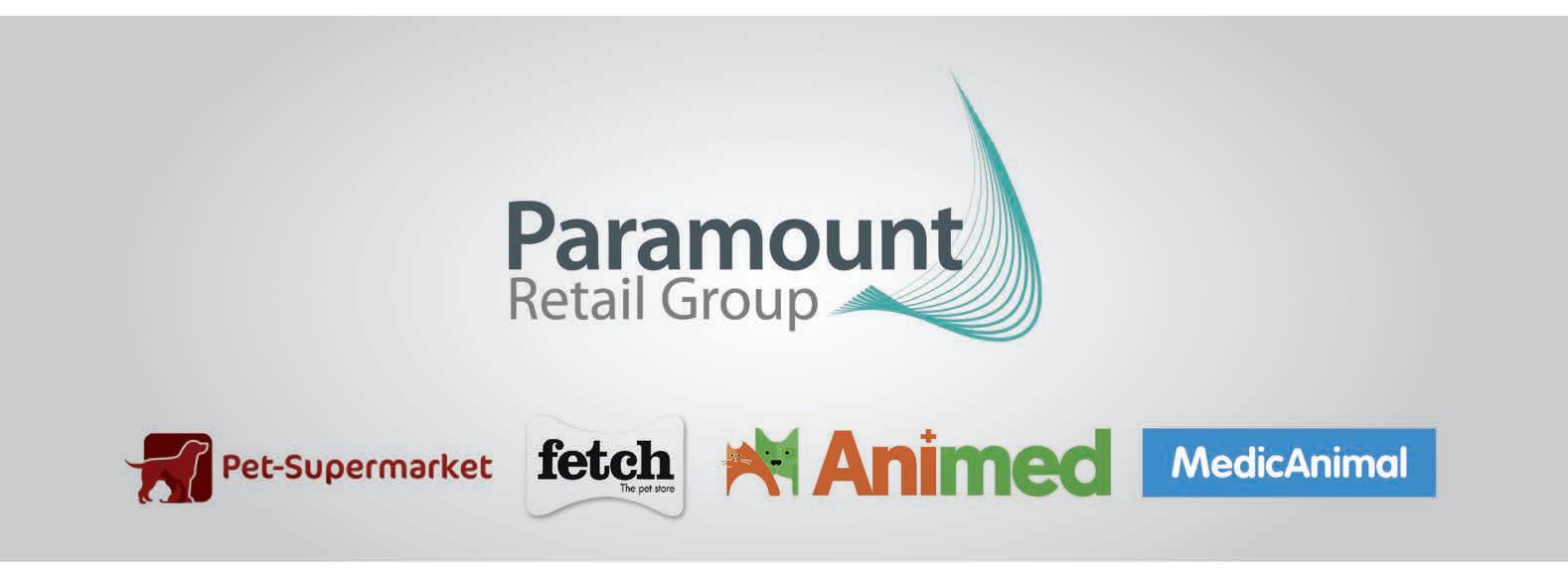
With a combined turnover of over £50m in 2021 alone, the retailers and brands will join a strong stable of pet and lifestyle companies already owned by PRG.
With over 250,000 regular subscribers, Fetch, Medic Animal, Pet Supermarket, and Pet
An exciting new consumer show has been launched to run alongside AQUA 2023, which will be taking place over three days for the first time at Telford International Centre, Shropshire, in October.
The new event for consumers, called Water Alive, will be staged over two of the days and will give fishkeepers the chance to see all the latest launches in one place.
AQUA 2023 is being held on Thursday, Friday, and Saturday, 12 —14 October, with Water Alive being open to consumers on the final two days (Friday and Saturday). The Thursday of AQUA 2023 will be a trade-only day as in previous editions.
The biennial AQUA exhibition, launched in 2010, has always been a business-to-business (B2B) only event but there has been a growing feeling within the industry that ‘end customers’ have missed out on meeting all the brands and new products in one place.
Now the launch of Water Alive alongside AQUA 2023 will help consumers become more engaged with their hobby and feel part of an amazing industry. Meeting experts face-toface in one arena will also provide them with an ideal opportunity to learn more about fishkeeping, aquascaping, watergardening and corals.
One of the most exciting aspects of Water Alive will be the Retail Mall where a mix of retailers will sell dry goods along with plants, corals, and other invertebrates. There will be no live fish sales.
Consumers will also be able to learn more about their hobby from experts giving talks at a special seminar area called Speakers Corner, plus a range of other hobbyist focussed features.
Registration for Aqua 2023 is live on the website www.aquatelford.co.uk. Consumers for Water Alive will be able to book tickets at the same site from the end of March. Companies wishing to exhibit at AQUA 2023 and Water Alive and retailers seeking more information about taking part in the Retail Mall should call the organisers on 01892 862848.

Meds are already well-established online retailers with strong brand heritage and a loyal customer base. The deal will ensure that customers continue to receive their orders in a timely fashion with the benefit of the group’s unique distribution infrastructure and existing networks.
Ravi Sharma, Director at Paramount Retail Group, comments: “PRG are delighted to have completed the acquisition of these fantastic online retailers and brands from Paws Group.” The latest move positions PRG as a major player within the pet industry — a sector that is increasingly attractive because of its relatively recession-proof reputation, humanisation, and premiumisation which drives pet product purchases.
PRG owns several core pet sector companies, creating a vertically integrated business model with significant synergies. The portfolio includes Pet Brands — an industry leader in the design and manufacture of accessories and treats for pets and wild birds and leading pet product wholesaler Vital Pet Group.
Fish4Pets Ltd. has announced that Graham Smith, who has been with the organisation for 13 years, is retiring as CEO. His successor, Sarah Fowler, took over the role of CEO from March 1, 2023.
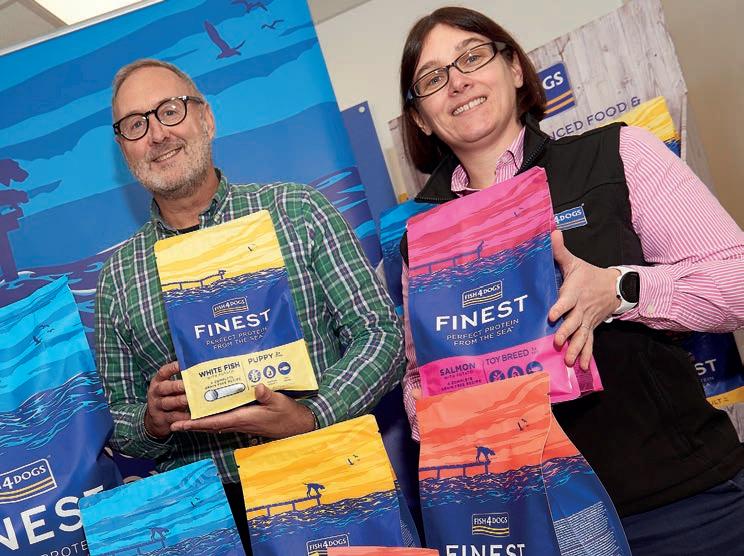
Sarah has had a very successful career in the pet industry, having previously worked as Commercial Director with Vital Pet Products and joined Fish4Pets five years ago as Sales Director.
Since Graham’s appointment as CEO in 2010, Fish4Pets has experienced impressive year-on-year growth, and now exports to over 30 countries. Thanks to major investments from new investors DSD and existing shareholder FKRA in Norway, the UK-based organisation opened a state-of-art warehouse and office facility in 2022 and has made 23 new hires in various strategic roles support the company’s impressive future growth plans.
Simon Nagle also joins the organisation as Chief Commercial Officer and Global VP of Sales to replace Sarah and support continued worldwide sales development.
The Pet Industry Federation (PIF) has announced a new partnership with Lopay, the UK based payment solution that helps businesses keep more of the money they earn. With a free card reader, flexible pay-outs, and transaction fees less than half those charged by its competitors, Lopay is the one of most cost-effective payment solution on the market.
Nigel Baker, CEO of PIF commented: “We are delighted to add Lopay to the wide range of benefits that are available to PIF members. We are always on the lookout for products that help members become more profitable and were particularly impressed with the fact that Lopay gives businesses more control over the money they earn at less than 50% of the fees.” When taking advantage of this new benefit, PIF members will automatically receive an introductory £1,500 of fee-free transactions and will also be able to decide when they get paid; weekly, the next day, or instantly, even on weekends and bank holidays.
Easy to follow instructions on how to start using Lopay will be available in the secure Members’ Area of the PIF website.
To join PIF and take advantage of Lopay, plus all the other great business benefits that are available to PIF members, including a legal helpline, fuel card, IT discounts from Dell and local authority help and advice, please visit https://petfederation.co.uk/
flexi® is celebrating a landmark anniversary.
When Manfred Bogdahn walked his dog Purzel along the pavements of Hamburg in 1972, people were amazed. A dog that walked several metres ahead of her master, yet was still leashed and stopped at the push of a button? Ingenious!
His creation, the retractable dog lead, which Bogdahn ingeniously put together with the help of a spring mechanism from a power saw, was not only a perfect solution for the prototype, but also the foundation stone for his company flexi, founded one year later.
The success story began on April 1, 1973 and the breakthrough came when Manfred Bogdahn presented this new lead on a four-square metre stand at the Interzoo 1974.
Word quickly spread about the then unique product and the great quality of flexi® leads — as they are very often referred to today as a category synonym — and it was only a matter of time before the first enquiries from abroad got the phones ringing.
The first production facility in the north of Hamburg quickly became too small and the decision was made in 1990 to build a production plant and a world-class company in neighbouring Bargteheide.

Today, more than 350 employees work for the flexi brand and produce tens of thousands retractable dog leads a day, which are exported to over 90 countries.
50 years of flexi® means inventive spirit and quality Made in Germany since 1973. For dogs, this means more freedom on the lead. For more information, visit www.flexi.de
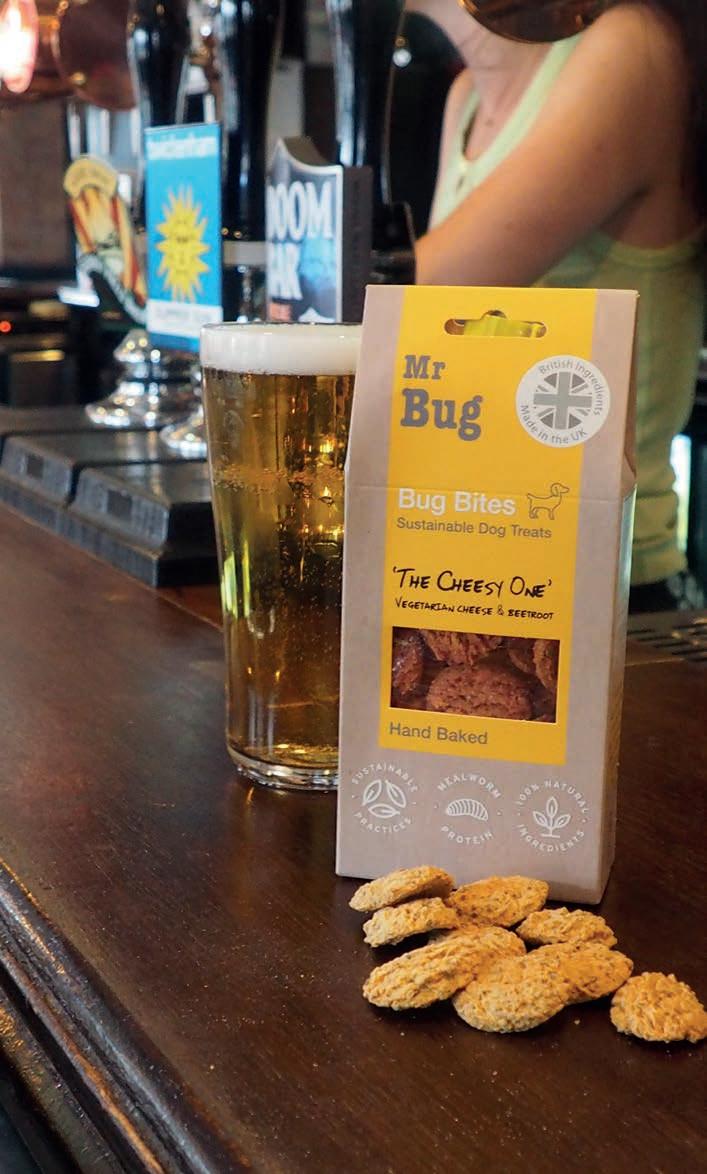
This Spring sees Devon disruptor Mr Bug push its unique range of nutritious bug bites into the South West’s growing gathering of dog-friendly pubs, bars and cafes; venues where dogs have for too long only had access to unappetizing doggy treats that have sat on the end of a bar in a jar forever and a day! Consistently, Kennel Club research has shown that allowing pet parents to bring their beloved dogs into the local pub or bar has multiple benefits for all parties concerned, from creating a loving home-from-home environment for ‘pawrents’ to building foot traffic, generating increased levels of interaction between guests, building pub-friendly social media activity while generating invaluable, added revenue.
In 2022, the Times highlighted that in excess of 2,400 retailers are now listed on the Dogfriendly.co.uk 40,000 strong business database, which has generated an exponential rise in searches for dog-friendly establishments over the last year.
According to Mr Bug founder Conal Cunningham: “At a time when pubs are consistently raising the quality of their human food offer, it makes sense that they also revisit the quality of their incumbent dog treats. Made from nutritious mealworm powder that delivers more protein than steak, more calcium than milk, more iron than spinach and more B12 than salmon, Mr Bug’s sustainable bug bites pair the Rolls Royce of vitamin-rich grubs with an array of great tasting real foods including beetroot, peanut butter, apple, cranberries, turmeric, parsnips, honey and vegan cheese.”
For more information, visit Mrbug.co.uk
OUR NATURALS RANGE KEEPS THINGS PURE AND SIMPLE BY LETTING MOTHER NATURE DO ALL THE WORK. WE GENTLY AIR DRY THE FINEST SINGLE SOURCE PROTEINS TO PRESERVE THEIR NATURAL NUTRIENTS AND WITH ABSOLUTELY NOTHING ADDED, IT’S WHAT WE DON’T PUT IN THAT COUNTS AS MUCH AS WHAT WE DO.

The UK’s largest range of natural dog treats.
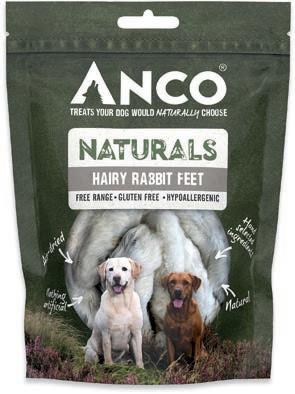
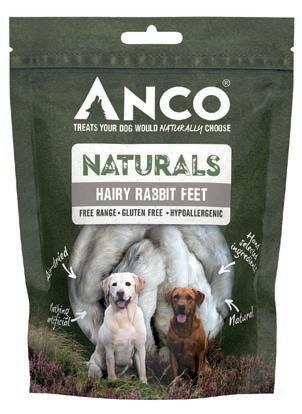

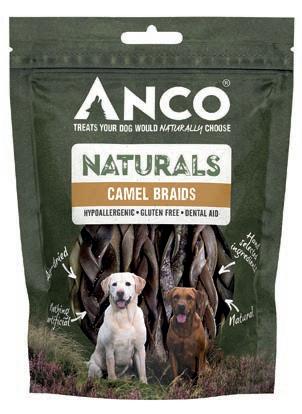
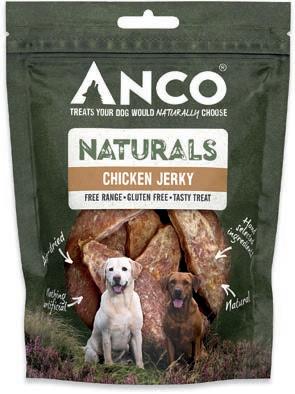
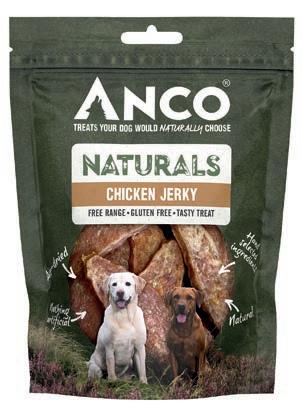

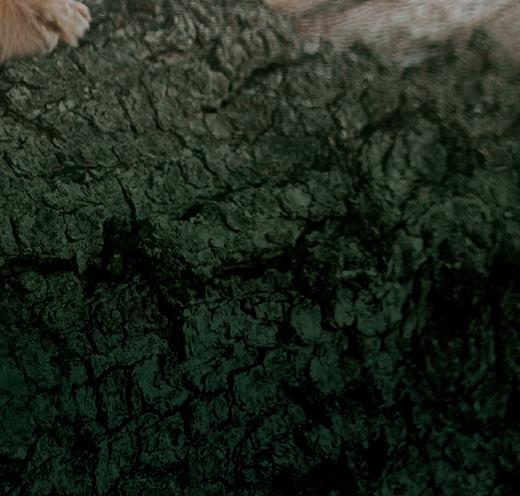
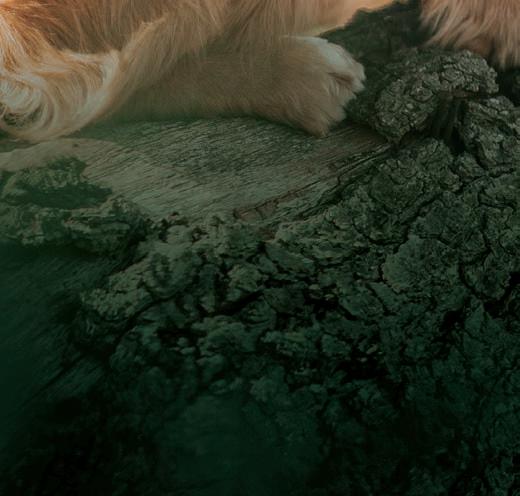



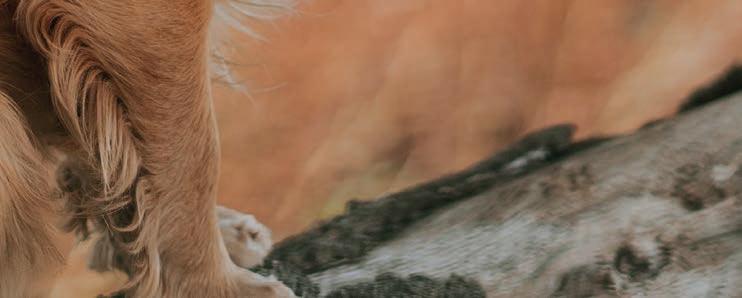
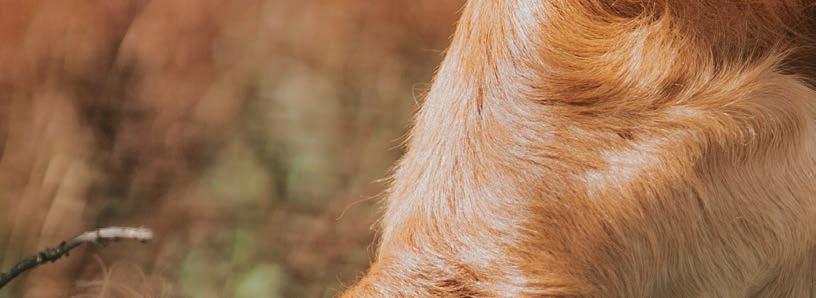
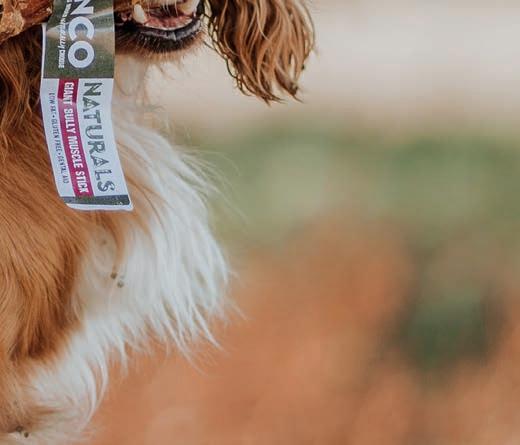
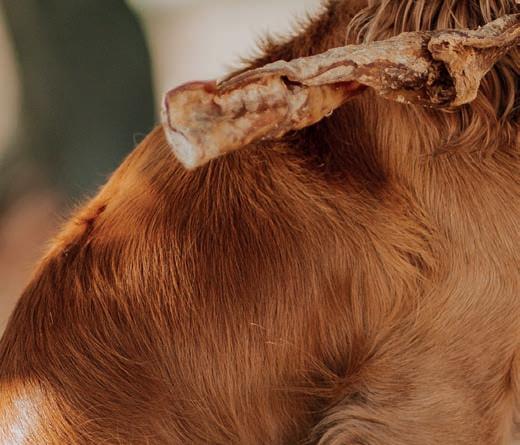





Oralade, one of the UK’s leading oral rehydration supports, has announced the extension of its range with the introduction of Oralade Active, available in three flavours: chicken, duck, and vegetable.
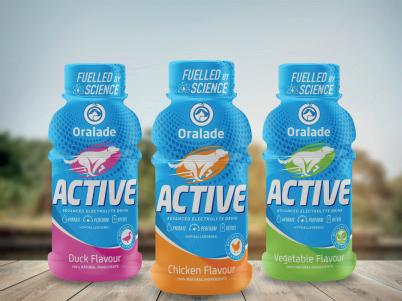
Active will take over from Hydrate+, an existing product within the portfolio of the Northern Ireland based manufacturer, Macahl Animal Health. Oralade Active is geared towards our four-legged friends with a more active lifestyle, be that search and rescue dogs, competitive agility sport dogs, or those who enjoy hikes and jogs with their owners.
Similar to other products within the Oralade range, Active underpins the importance of rehydration support for our pets. Studies have shown that in human dehydration as low as 2% can result in cognitive impairment and fatigue, yet in dogs and cats, dehydration of up to 5% is often imperceptible from clinical exam alone.

Oralade Active can therefore be used pre and post activity to decrease the likelihood of dehydration. Supporting the needs of our active dogs, Oralade Active goes one step further, featuring higher carbohydrates for increased energy and l-carnitine to aid muscle recovery.

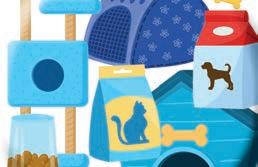
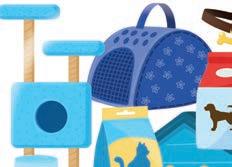

With luxury, style, and conscious lifestyles at the forefront of Skylos Collective’s newly launched dog accessory range, the company’s apple leather leads, collars, and poop bag holders are ticking all the boxes for discerning dog owners who are keen that their passion for creating a better tomorrow extends to their four-legged friends.
Skylos Collective founder, Ella Peters, says: “For consumers keen to embrace brands that don’t greenwash, don’t offer the stereotypical vegan style and don’t follow the crowd, our collection is a win-winwin. Made with vegan leather engineered from waste generated by the apple juicing and compote industries in Italy, we’re very proud that every product is manufactured here in the UK by a team of artisan craftspeople and supports the preservation of leatherwork manufacturing skills.
“From striking silver to blush pink, our colourways offer vivid options for outfitted dogs to match their owners’ personal style aesthetic.”
With delight in the detail, collars and leads are available in two widths, and collars in four sizes — the needs and sizing of breeds from Chihuahua to Doberman have been considered. Ella adds: “While we don’t always want our values emblazoned across our chest, consumers are looking for products that give them peace of mind that they’ve made an ethical choice. Our collection leads the way in conscious luxury canine attire.”
Setting Skylos Collective apart is its commitment to transparency. Customers can explore the company’s complete product journey, from verified eco credentials to its charity support by simply scanning the QR code on the tag. Already this level of openness is becoming a talking point with those embracing the brand.

Full details of the range can be viewed at www.skyloscollective.co.uk For trade enquiries, email ella@skyloscollective.co.uk or call 07587 855 714.
Commenting on the new range, Macahl Animal Health CEO Anthony Mackle said: “The introduction of Active to our product portfolio is a really exciting development for the Oralade brand.
“Oralade Active is a convenient, easy to carry bottle that contains a unique isotonic formula geared towards the rapid replenishment of essential fluids and electrolytes in our pets’ bodies. Available in three flavours, the range also offers pet owners with great variety depending on their pet’s preferences, all made with 100% natural ingredients.
“Unlike many other rehydration products on the market, Oralade’s range is available in ready to pour formulations and therefore does not contain any citrates or preservatives which may impact the palatability of the product for the pet. In addition, our products are also made with purified water, removing the issue of chlorine which can also affect taste for pets. We’re proud to be able to offer the industry another great product that is practical in usage, supports our pets, and has an attractive price point with an RRP of £2.49,” added Anthony.
Visit www.oralade.com to find our more. Active will be available through wholesalers or for trade enquiries, contact sales@macahl.com

Nylabone has launched Gourmet Style, an exciting new range of chew toys that features visibly tasty morsels of flavour for a distinct chewing experience.
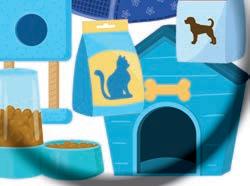
Created using Nylabone’s iconic strong nylon material, the new range combines delicious flavours which are roasted throughout for long-lasting chewing satisfaction.
ange for he t d’s rs stick afer


























Gourmet Style is available in both adult and puppy chewing categories and features three of Nylabone’s most popular distinctive flavours: chicken, bacon, and peanut butter. The adult chew toys have been created in the brand’s classic ergonomically designed wishbone shape that offers three different chewing ends, and their universally loved stick shape that realistically mimics the real thing but is both safer and cleaner. These are available in small and large sizes.
pes: delicious oys, hewing ilable in small and medium sizes



The puppy Gourmet Style chew toys come in three shapes: wishbone, stick and femur, each of which is infused with delicious flavour throughout. As with other Nylabone puppy chew toys, these new additions are a great way to help develop positive chewing habits while aiding with teething and canine enrichment. They are available in small and medium sizes.
Nylabone Gourmet Style chew toys are manufactured in the United States where they were recently awarded the accolade of ‘Chew Toy Product Of The Year’ in the 2022 Pet Independent Innovation Awards.
The Gourmet Style range is available to order now from Interpet’s trade website: https://trade.interpet.co.uk/




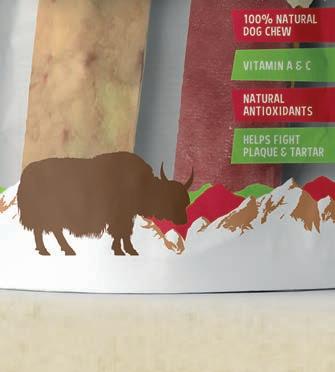

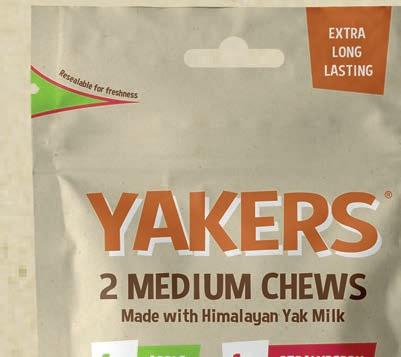











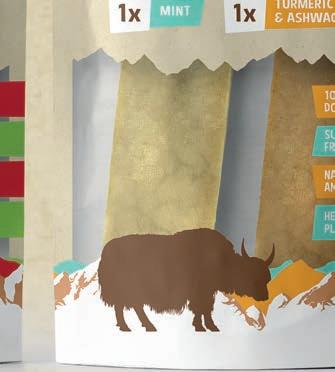


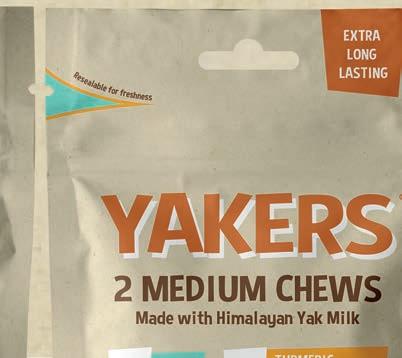



Apollo & Luna has launched a unique dog food topper that promises to add delicious flavour to dry kibble while also enhancing it with essential nutrients.
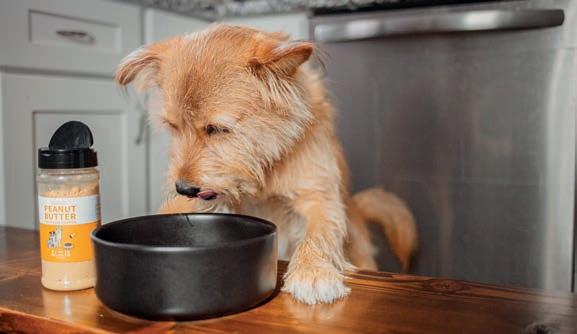
Apollo & Luna is a new all-natural calcium supplement and flavour enhancer for dogs, made in the USA with only the finest, natural ingredients. Its first flavour, Peanut Butter, is packed with calcium and other key minerals that promote healthy bones and teeth, and is completely free of artificial colours or flavours. The product is also grain-free, making it suitable for dogs with sensitive stomachs.
The idea for Apollo & Luna was born from a need for a better solution to the calcium deficiency that is common in dogs. The team, frustrated with the limited options available, decided to create a product that would not only address this issue, but also provide a delicious and healthy addition to a dog’s diet.
“We want to give our dogs the best and we believe that starts with their food,” says Elizabeth Stone. “We’re thrilled to share Apollo & Luna with other pet owners and see the health benefits it brings to dogs everywhere.”
Apollo & Luna Peanut Butter Dog Food Topper is an easy and healthy solution for pet owners who want to give their dogs the taste they crave while also providing essential minerals. It’s perfect for dogs who need a calcium supplement, those who refuse to eat, are bored with plain kibble, or just want a special treat every now and then.
For more information on Apollo & Luna, visit www.apolloandlunaco.com or for trade enquiries visit apolloandlunaco.com/pages/ws-account-create
Crafted with care for those that are dog-tired of exposing their pets to synthetic ingredients, allPaws is the organic, cruelty-free pet grooming range from Green People.
Offering fur-freshening grooming products that transform mucky pups into pristine pooches, the products in the allPaws pet care range are made with gently cleansing, pHbalanced natural actives that are sustainably sourced and suitable for all dog and cat breeds.
The pet-approved products are also certified organic and vegan-friendly, making it easy for pet owners to provide creature companions with a planet and pet-friendly bath time routine that won’t irritate sensitive skin.
A natural way to provide faithful hounds and long-haired cats with a plant-based pet spa treatment, Green People’s allPaws pet care range offers a duo of naturally cleansing pet washes.
Designed for pups that love nothing more than getting back to nature by playing in muddy puddles, the shampoos come in a choice of scented or scent-free formulas and come in a tube that’s made with eco-friendly sugar cane plastic.
Much like Green People’s skin care range for humans, the pet grooming products are both SLSfree and highly concentrated with animal-safe plant actives, meaning a little goes a long way.
allPaws Wild Mint Cleansing Shampoo
This organic dog shampoo freshens musty mongrel smells with a soothing blend of mint and
eucalyptus bath bubbles which leave fur soft and fragrant without irritating delicate skin. Suitable for all breeds and pups aged 12 weeks or older.
allPaws Sensitive Shampoo
This unscented shampoo is designed for dogs with extra sensitive skin and does not contain any fragrance. Suitable for all breeds, this gentle formula is the perfect choice for a puppy’s first bath.
NEW! allPaws gift set
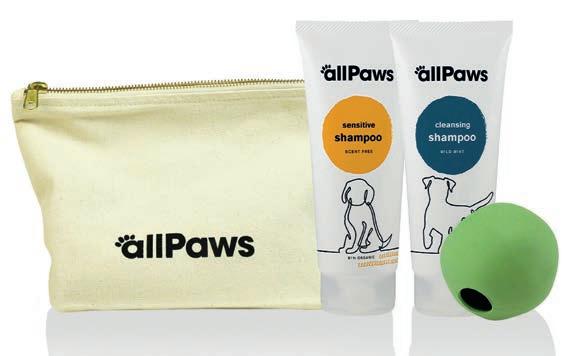
Fetch Me A Bath dog shampoo set – Muddy paws are no match for the allPaws organic dog shampoo gift set. Enjoy treat-based play time with a natural rubber ball which features a hidey-hole for your dog’s favourite snack. If playtime gets messy, gently restore soft, fresh fur with a deluxe duo of naturally non-irritating, organic pet shampoos.
For more information, visit www.greenpeople.co.uk/ and for trade enquiries, email organic@greenpeople.co.uk or call 01403 740350.

Trusted market leaders CSJ are launching Cani Supps, a unique range of four vegan friendly, high performing supplements for dogs.
Doodlebone has launched a new innovative solution for carrying your Poop Bags: The Pick n Clip — the perfect hands-free solution for carrying your poop bag.
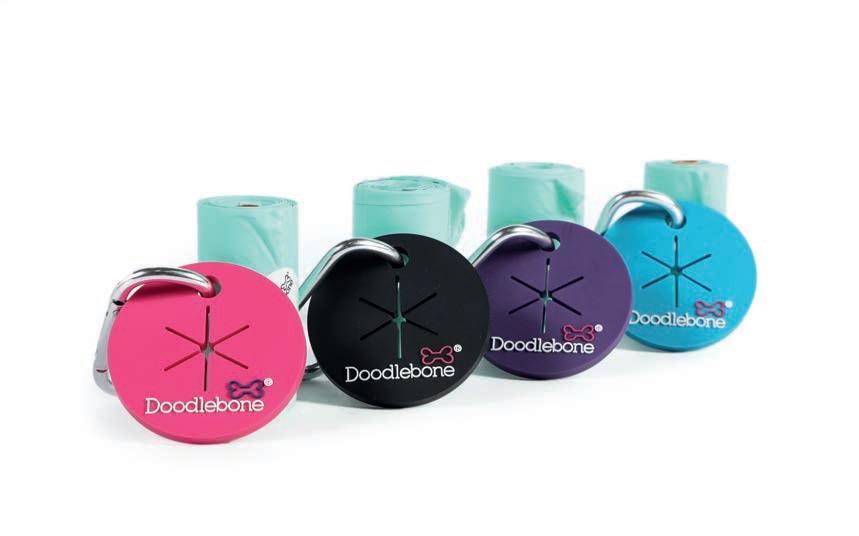
The Pick n Clip is a small and simple product for convenience when carrying your poop bags. Fed up with constantly juggling different walking essentials? The Pick n Clip helps to reduce the juggle. They are designed to carry your poop bags until you find the nearest dog waste bin. It works well when partnered with Doodblebone’s Eco Poop bags that are completely plastic free. Yes, that’s right no plastic. Doodlebone Poop Bags are made using corn starch and a hint of aroma to disguise those unpleasant smells.
The best part about the Pick n Clips is they can clip on to any of the Doodlebone leads, whether it’s the standard lead, rope, or retractable rambler.
Key Benefits:
● Easily clips onto all Doodlebone style leads.
● The perfect hands-free solution for carrying your poop bag.
● Designed to make poop bag carrying easier.
● Clip and go until you find the nearest bin.
● Make an unglamorous job stylish.
Price: RRP: £4
To find out more, visit www.doodlebone.co.uk or for trade enquiries, visit www.trade.doodlebone.co.uk or call 01295 698072.
After extensive research and development, Cani Supps Build Up!, Shift! PrePro Paste, and Algae Oil each have their own special benefits in high quality vegan friendly formulations:
Cani Supps Algae Oil — the renewable alternative to fish oil helps to promote skin and coat condition while being beneficial for joint health.
Cani Supps Build Up! — a high energy supplement to promote physical well-being and overall appearance including muscle health and function, and is ideal for hard working dogs plus older dogs, those during rehabilitation, pre and post operative, and young growing dogs.
Cani Supps PrePro Paste — contains two strains of Probiotics combined with Prebiotics to promote healthy gut function and normal stools while supporting the immune function and is ideal for short term usage for young puppies, senior dogs and dogs experiencing various forms of stress-related digestive issues.
Cani Supps Shift! — this has been formulated to support nutritional maintenance of healthy joints and cartilage in dogs with a combination of the highest quality Glucosamine HCL, Chondroitin Sulphate, MSM, Hyaluronic Acid, Vitamin C and Manganese in a convenient powder format ideal for older dogs that are starting to slow down and show signs of joint stiffness as well as sporting and performance dogs.
For over 20 years, CSJ’s comprehensive natural feeds, treats, and supplements have been renowned for innovation and pin-point accuracy in identifying and satisfying the real needs of dogs. New Cani Supps illustrates that once again CSJ’s knowledge and dedication keeps them ahead of the field while keeping usage cost per day down.
For more on CSJ products visit www.csjk9.com or for trade enquiries, call 01745 710470.
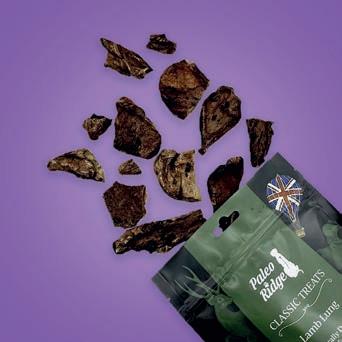
Multi award-winning, sustainable pet treat manufacturer, The Rainforester, which produces ‘Pet Products for the Planet,’ has extended its product range with the launch of 19 tasty new natural grain/gluten free dog treats featuring rainforest superfood ingredients.
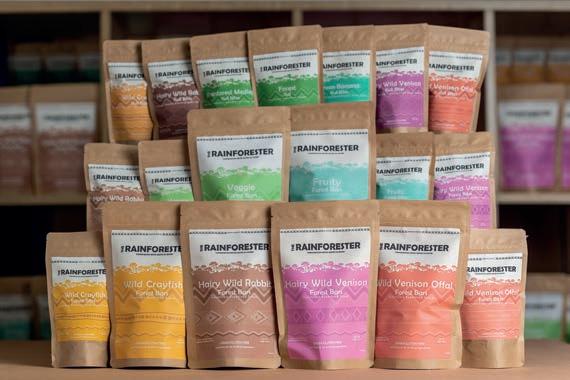
Packed with healthy and nutritious ingredients, the new range is made in Great Britain and consists of Forest Bars, Forest Bites, and Kuli Bites, most of which are made from sustainably sourced British invasive animals where the species are causing havoc on the ecosystem. These include wild rabbit, venison, and crayfish which are combined with rainforest fruit and vegetables to create snacks high in protein and fibre, as well as vitamins A, B-3, B-6 and E. Rainforest superfood vegan options are also featured in the new range including Forest Soil, a meat-free superfood dry food topper.
Lean game meat is a good source of minerals such as iron, zinc, copper, and phosphorus, and some of the snacks and treats even include the fur from the animal, a great natural way to keep guts clean and healthy. In addition, crayfish is a good source of calcium and omega-3 fatty acids.
The rainforest superfood ingredients featured in The Rainforester products include cocoyam, peanuts, green banana, moringa, coconut, pumpkin leaf, bitter leaf, scent leaf, eru leaf, turmeric, ginger, ogbono, egusi, mango, and pawpaw. These have a huge range of benefits and feature anti-inflammatory, antioxidant, antibacterial, antifungal, larvicidal, and antipyretic properties, as well as being natural probiotics.
The new product range will be launched in eye-catching, colour coded, compostable packaging and with each purchase money will go towards supporting conservation work both in the UK and around the world.
Jonathan Mbu, co-founder and director of The Rainforester, comments: “Our new product range is a fantastic example of commercial conservation and sustainability and demonstrates how we can popularise and develop non-timber forest products (NTFPs) from the rainforest and combine them with British indigenous animals to create healthy and nutritious treats that dogs love!”
For further information on The Rainforester product range visit www.therainforester.org/our-store or for trade enquiries, email sales@therainforester.org
Paleo Ridge, a leader in raw dog food manufacture, has launched four brand new treats.
Ideal for dogs aged over 12 weeks old, the new naturally-dried treats are ethically and sustainably sourced in line with the company’s strong and recognised ethos on environmental sustainability.
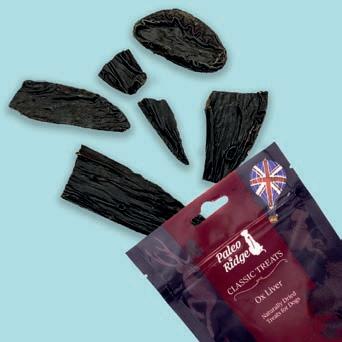
Joining the Classic Treats range of Sprats and Fish Cubes are: Classic Ox Liver (60g), Turkey Liver (60g), Venison Bites, (60g) and Lamb Lung (90g), all now available to order online or purchase in stockists around the UK.
Will Green, Director of Sales and Marketing at Paleo Ridge, said: “Our Classic Treats range is a popular and healthy way to treat your dog, and we are thrilled to be adding four new products.
“As with all Paleo Ridge products, we have worked hard to ensure that these new treats are not only healthy, but have the highest welfare and sustainability credentials.”
Paleo Ridge carries out due diligence on every supplier the company uses, without compromise. With a dedicated and passionate team of very experienced industry professionals, Paleo Ridge makes sure that their very strict requirements surrounding welfare, ethics and sustainability, are adhered to. Only those meeting these very strict standards, become suppliers.
The new Classic Treats are available for dogs from 12 weeks and can be fed as a treat or a meal topper.
To find out more about the new Classic Treats, visit www.paleoridge.co.uk and for trade enquiries, visit www.paleoridge.co.uk/stock-paleo-ridge
Award-winning herbal pet care experts at Dorwest Herbs have switched their entire homoeopathic remedy range from pillules to liquid formulations.

In an exciting update to Dorwest’s homoeopathic range, the change to liquids makes them even easier to administer, allowing a few drops to be added directly on to pet’s food or into pet’s mouths, making them ideal for fussier pets, and especially cats.
Homoeopathic remedies can be a great addition to any pet’s first aid kit and can be used short-term, such as following a fright or muscle strain, or long-term for ongoing support. The new range has old favourites, such as Fragaria 3C for helping to keep teeth in top condition, as well as a new addition, Sulphur 30C, which is renowned to help with those that experience skin issues.
Managing Director Jo Boughton-White says: “We’re always looking for ways to make our ranges bigger and better for our valued customers. The change from pillules to liquids means even easier administration, with drops of liquids now added to food or directly into the mouth.”
To check out the new homoeopathics range, visit www.dorwest.com/category/homoeopathicremedies or to find out more about Dorwest and for trade enquiries,, call one of their friendly, expert team on 01308 897272 or email info@dorwest.com
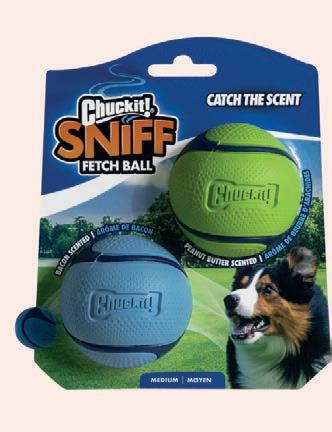
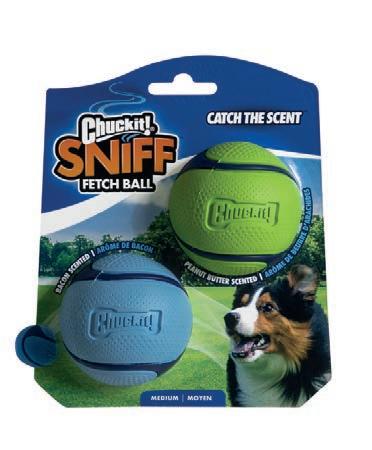
Pedigree Wholesale is now stocking the brand new Chuckit! Sniff Ball range, available in both a delicious Bacon and a Peanut Butter scent.
These new toys are designed to excite more than 100million scent receptors in a dog’s nose, making finding the ball easier and making playtime even more fun!
Made with durable natural rubber and an extra thick core, the Sniff Fetch Balls are developed to have high bounce, high buoyancy and high durability while the scent attracts dogs! They are also compatible with any Medium Chuckit! Launcher for the ultimate game of Fetch. The Chuckit! Sniff range features three products; each scent is available separately, and a duo pack is available. The toys retail from £9.99 to £16.99. Chuckit! toys have been developed to create more ways to play, and these deliciously scented Sniff Fetch Balls will excite dogs and encourage them to sniff them out when playing fetch! The Chuckit! Sniff Ball range is exclusively available to the specialist pet trade via Pedigree Wholesale. The exciting Chuckit! Sniff Ball range is the perfect addition to stores and is available for order now, exclusively to the Specialist Pet Trade through Pedigree Wholesale.
To find out more, visit www.chuckit-toys.co.uk or for trade enquiries, visit www.petproducts.co.uk
Award-winning herbal pet care experts at Dorwest Herbs have launched new pet shampoo bars using 100% natural ingredients, the perfect partners for bath time.
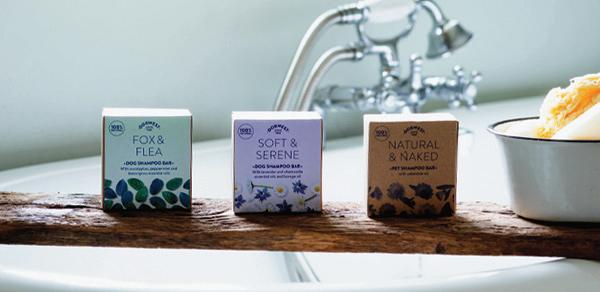
The all-new nourishing shampoo bar range supports optimal skin and coat health, with a base blend of coconut oil, shea butter, sunflower oil, castor oil, and sweet almond oil. The formula is easy rinse with no residue left behind and creates a creamy lather to help effortlessly clean the coat and lift dirt. They are also suitable for all coat types, so whether your four-legged friend is long, short, wire or smooth coated, they can be pampered by nature.
Dorwest’s new shampoo bars are:
● helpful to stimulate circulation, supporting healthy skin and coat during massage.
● better for the environment, as they are completely plastic free with 100% recyclable packaging.
● ideal for travel, small and easy to pack with no risk of leaks.
● long-lasting, as can provide more washes than a bottle of liquid shampoo.
● free from artificial colours and fragrances, parabens, SLS, silicone, mineral oil, petroleum and PEGs.
● handmade and manufactured in small batches in the UK.
The new range includes:
Fox & Flea Shampoo Bar — keeping four-legged friends clean with a luscious fresh and minty scent. Nettle, and eucalyptus, peppermint and lemongrass essential oils help deep clean and counteract unpleasant odours, even the fox poo rollers! These oils are also known to help deter unwanted biting insects such as fleas and ticks. £9.50 RRP.
Soft & Serene Shampoo Bar ¬— specially formulated for dogs prone to itchy, irritated, and sensitive skin, with a subtle floral scent. With borage oil, chamomile and lavender essential oils, alongside a base blend of shea butter and coconut, sunflower, castor and sweet almond oils, these highly soothing natural ingredients support optimal skin health. £9.50 RRP.
Natural & Naked Shampoo Bar — with a stripped-back and simple formula and no essential oils, ideal for even the most sensitive skin. With subtle aromatic, earthy notes, this bar is perfect for any pet, including those who may be prone to allergies. With calendula oil and a base of shea butter and coconut, sunflower, castor and sweet almond oils, it is highly moisturising and nourishing for flake-free, healthy skin. £9.50 RRP.
Managing Director Jo Boughton-White says: “We’re delighted to launch our new shampoo bars to add to our existing Topicals range. The bars are easy to use, smell incredible and are naturally conditioning and moisturising. This combination helps reduce the need for a separate conditioner and ensures that you’re washing your dog with nothing but natural goodness.”
View the new range now at www.dorwest.com/category/topicals or for trade enquiries, call one of the friendly, expert team on 01308 897272 or email info@dorwest.com
Up and coming pet food business, Vale Pet Foods which is based in Leicestershire, launched their new packaging for their raw food range at Crufts.
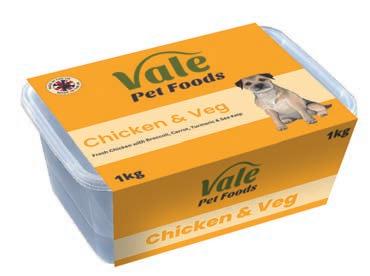
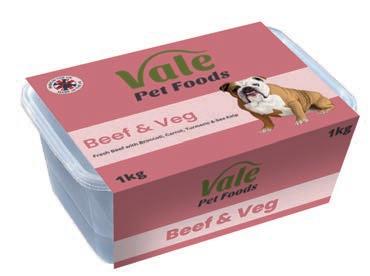
All of Vale Pet Foods’ 80/10/10 varieties of raw contain the perfect balanced ratio of meat, offal, bone and nutrients to ensure that every dog is provided with everything they need to maintain great overall health and wellbeing.
There are a number of varieties to choose from: Purely, Chicken, Purely Beef and Purely Duck for those dogs that prefer a single protein source. Duck and Beef, Duck and Tripe, Turkey and Beef, Beef, Tripe and Turkey, Beef, Tripe and Chicken are complete recipes. Chicken and Lamb, Beef and Tripe and Beef and Green Tripe are 50/50 recipes. There is something there even for the most sensitive of tummies.
The new packaging comes in recyclable plastic 1 kg tubs with attractive cardboard sleeves.

For further information, visit www.valepetfoods.com or for trade enquiries, email woof@valepetfoods.com s,
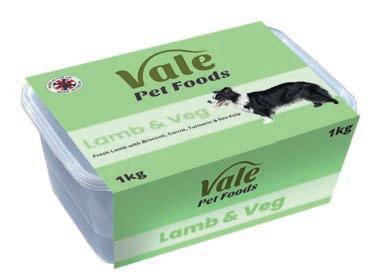
Tea Heritage, a boutique company producing delicious and unusual organic teas, has launched their very own Dachshund Tea Bag, which is the perfect gift for dog lovers!
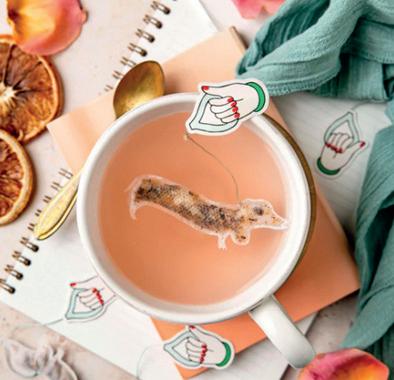
The Dachshund is the UK’s fifth most popular dog breed and Tea Heritage has celebrated the breed by collaborating with Coucou Suzette to create a Dachshund Tea Bag. The Dachshund Tea Bag is available in an Enchanted Night Infusion, which includes: apple, hibiscus flowers, rose petals, orange peel, coconut shavings, almonds, pineapple, marigold flowers and blueberries. Refreshing organic apple, hibiscus flowers, rose petals, orange peel, coconut shavings, almonds, pineapple, marigold flowers and blueberry tea, in a Dachshhund-shaped tea bag. They have an RRP of £6.30 for five tea bags.
To find out more, visit https://teaheritage.fr/en or for trade enquiries, visit https://teaheritage.fr/en/pages/nous-contacter to get in touch.
HugMyDog is an exciting innovation in dog food.

HugMyDog is launching the UK’s first premium ready meals for dogs. Comprising a range of complete meals using prime cuts of British meat, chicken, and fish with seasonal vegetables and sprinklings of nutritional vitamins and minerals. These frozen, microwaveable ready meals can be cooked straight from the freezer and served (once slightly cooled!) for your courageous canines, pampered pooches and hardworking hounds to enjoy! How to serve?
Simply take a HugMyDog tray from your freezer, pierce the film sleeve and pop it in the microwave for 3 minutes. Either divide up into bowls for breakfast and dinner, or serve straight from the tray (remember to allow to cool slightly!) No fuss, no cleaning, just a quick, simple, healthy and nutritious meal for your dog.
Made with love in the West Country, HugMyDog is committed to providing our beloved companions with the highest quality ingredients, to provide an all round complete meal, morning, noon and night.
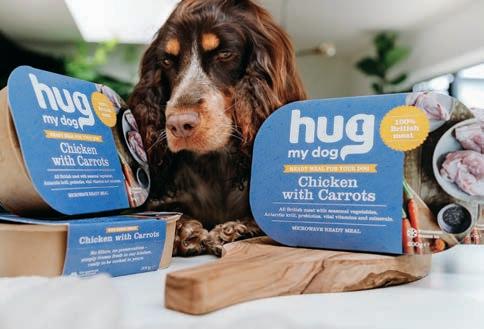
The health of our pets is something dog parents should be taking very seriously, given the scientific evidence which proves the correlation between the food you feed and the effect on temperament, day to day health, and quality and longevity of your dog’s life. This research is at the core of what HugMyDog stands for, and is evident from the thousands of dogs already enjoying HugMyDog!
The expert team of nutritionists at HugMyDog have developed recipes to meet the specific daily needs of puppies, adults and senior dogs, these include Beef with Sweet Potato, Chicken with Carrots and Pork with Apple.
HugMyDog has a minimum meat content of 70% and is made from human-grade prime cuts of meat, which is bone-free, does not include offal, grains, legumes, or fillers, comprising just wholesome and nourishing ingredients.
Sara Pearson, a joint founder of The Hug Pet Food Company, says: “Historically, pet food choices have been wet (tinned), dry (kibble), ready-cooked or raw. In the same way you would not dream of feeding your baby solely on a diet of tinned or dried food, it applies equally to a much-loved dog. The new urban pet owners have come into the market with fresh eyes and understand that feeding their pets properly with a good and wholesome diet can extend life, minimise illness and generate health and happiness. HugMyDog has been developed specifically to meet this demand.”
For more information, visit www.thehugpetfoodcompany.com or for trade enquiries visit https://www.hugpetfood.co.uk/become-a-hug-stockist-trade/ or email hello@ hugpetfood.co.uk



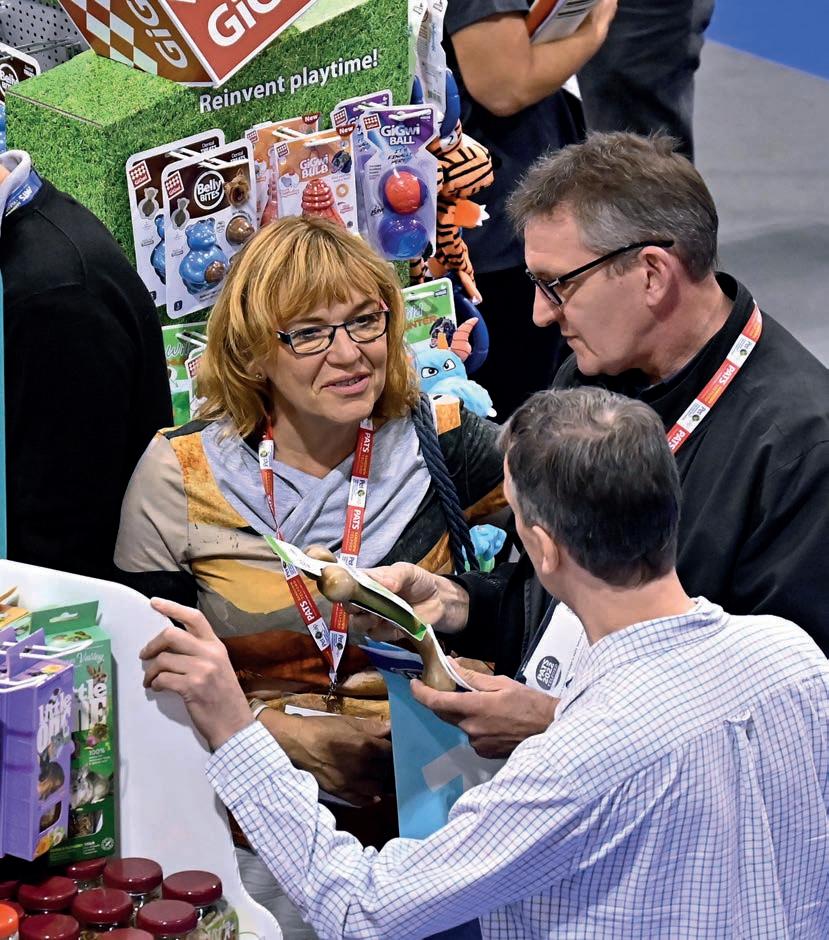


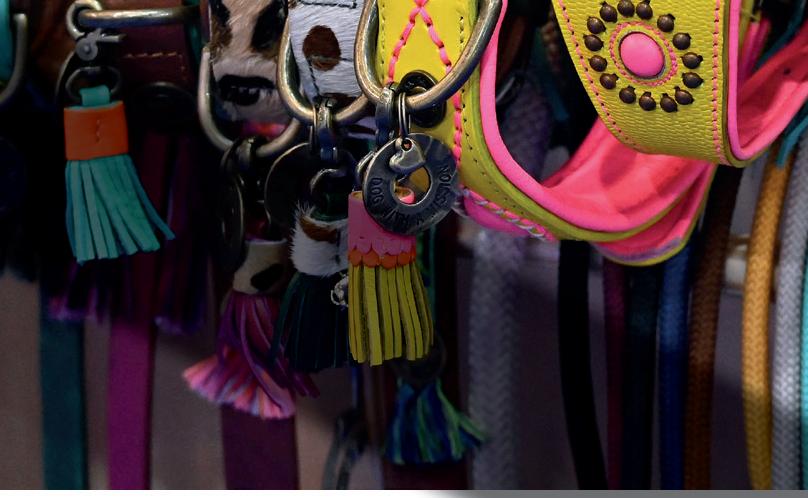



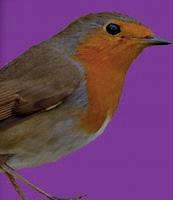














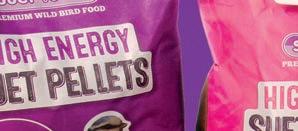


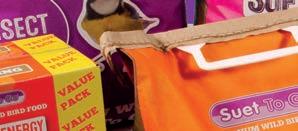
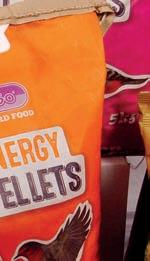

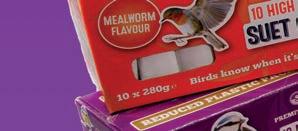
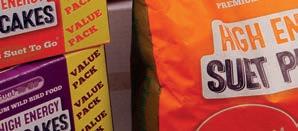
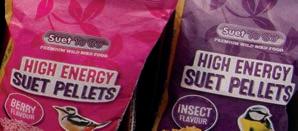
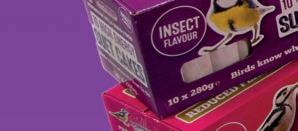
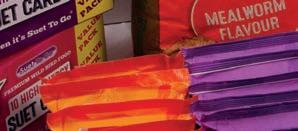












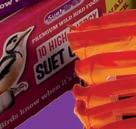








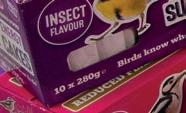



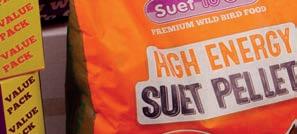


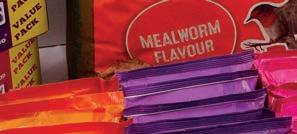












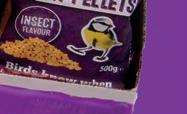












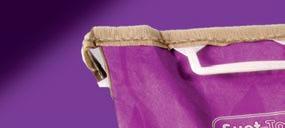

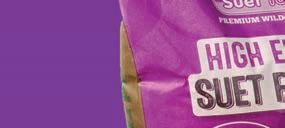


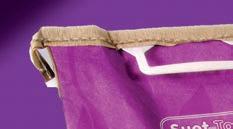





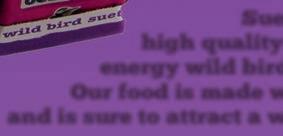


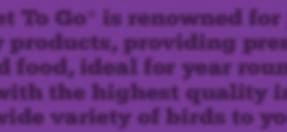
















Veterinary medicines offer a significant opportunity for independent retailers. The market itself is worth an estimated £745 million a year and products are often high value, offering higher cash margins. This is particularly the case with NFA-VPS products which can only be sold by SQPs (suitably qualified persons) in your shop, compared to AVM-GSL medicines which can be sold anywhere. The barriers to introducing products available via an SQP are often lower than retailers might think and the benefits considerable.
NFA-VPS is a classification of medicines applying to non-food animals (ie pets) and these medicines can be dispensed by a vet, SQP, or pharmacist. They don’t require a prescription, but the dispenser is obligated to make sure that the pet owner is able to be given suitable advice that ensures the product is used safely and that the medicine is appropriate to be used routinely to prevent or limit the effects of disease.
Currently, products in this category are mainly flea, tick, and worm treatments. When recommending parasiticides, a number of factors have to be taken into account. An SQP’s training allows them to evaluate the correct product for the individual animal and to provide advice on how to administer the medicine.
What factors might an SQP take into account when recommending a VMP (veterinary medicinal product)?
Ensuring safety and efficacy is key and SQPs need to be expert at gathering relevant information. Some regulators and training providers include training in communication skills.
It’s clear that this can be a big benefit as the conversation should aim to extract the right information while building
rapport, rather than becoming an officious interrogation. As ever, in retail, the customer experience is everything. Here are just some of the questions that have to be considered: Age — not all products are suitable for young animals. Bodyweight — different dosages are needed for animals of different body size. Multi-pet households — not treating all the animals that can host parasites can make control difficult. It’s also important to ensure that products are appropriately labelled for the right animals to avoid any confusion.
Previous history — which products have been used in the past and when, and have there been any adverse reactions? Risk assessment — does the pet live an indoor life or outdoors? Are dogs walked in known tick-areas? How frequently is the pet bathed or swims in a river? How much contact is there with other animals? Have there been any visible parasites? Does the pet live with children or anyone who might be immunocompromised? Does the pet eat raw meat or hunt and eat its kill?
Health — is the animal otherwise well or receiving any other medications?
Each answer will help a competent SQP to get closer to a suitable product recommendation while also identifying areas the pet owner might not be aware of. For instance, the need to treat a dog in contact with small children not just for the visible fleas as requested but also tapeworm due to the risks posed by fleas and roundworm to avoid the risks to the children from zoonosis.
All parasites can potentially reinfect their hosts after treatment and therefore regular treatment to prevent this is essential. In the case of fleas, failure to treat can result in an infestation in the home and even when using all the right products to treat that infestation, control can take up to 90 days. If worms are untreated then the pet may remain well for some time but they will be passing worm eggs into the environment that potentially will add to their worm burden and also infect other animals (and sometimes people).
So, knowing how often to treat and being able to advise on other steps that need to be taken (for instance picking up dog faeces within 24 hours before worm eggs become infective) is an important part of the SQP role. Such advice is often valued by the customer and adds credibility to the outlet — purchase doesn’t just involve a transaction, it’s an expert-led conversation that helps to build relationships and loyalty.
Repeat sales can and should be generated by your medicines category. The subscription model is increasingly popular, particularly with millennials who are said to prefer to budget using monthly payment models. In the veterinary sector, flea and worm treatments are often bundled in with health plans which offer a range of benefits and also ensure year round compliance with the parasite programme.
While the benefits of regular treatment are considerable, we know that many pet owners treat for parasites (especially fleas) in the spring through summer, despite fleas being a year-round challenge in centrally heated homes. Ticks have also started to become more active through milder winters. Better compliance is not just better for animal welfare, it is also good for business and an SQP can help to drive home the message around the importance of regular treatment.
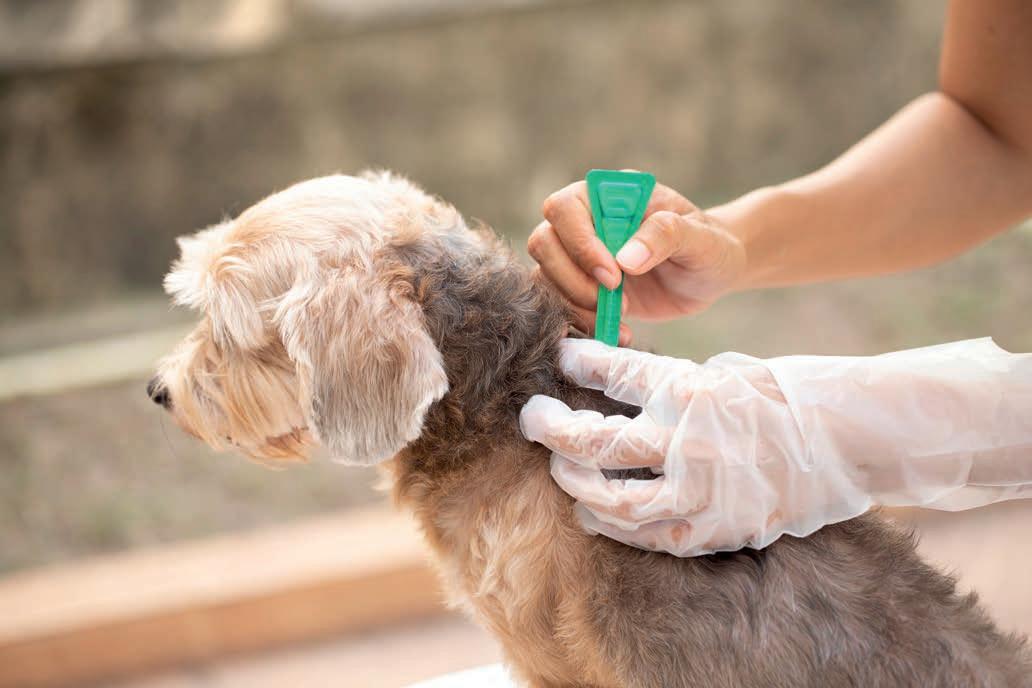
A background in science can help when it comes to SQP training, but regulators do ensure that the training covers everything students need to know and assumes no previous knowledge. Some provide online training and online invigilated exams available 24/7.
SQPs have to operate from registered premises but the process and costs associated with this are much less than might be supposed. The Veterinary Medicines Directorate provides guidance for retailers and to become a registered premises involves filling in a simple form and producing a plan of the relevant areas used for medicines display and storage. For less than £800, it’s possible to register the premises and train a member of staff as an SQP. Most retailers find they can recoup these costs within a matter of months and thereafter NFA-VPS sales largely represent incremental profit. There are some ongoing costs to maintain store registration and SQP training to remain up to date and on the SQP Register but these are much lower than the initial costs and should be easily absorbed by increased sales.
Medicines in the NFA-VPS category should not be left out for general display, but dummy packs can be used. SQP regulator Vetpol can advise on merchandising of the veterinary medicines fixture to help create awareness of the offer with customers. Locating this next to the health and hygiene category where shoppers will be looking for problem solving solutions is ideal. Where a customer might have bought a low cost flea shampoo or flea collar, there’s often the opportunity to introduce a higher margin spot-on that will provide faster and more long lasting control of fleas, for example.
An SQP’s training doesn’t just stop with parasiticides. SQP regulators, such as Vetpol, also ensure that the training they provide covers nutrition and all aspects of health. An animal’s nutritional status can be affected by parasites and that means an SQP needs to be able to recommend not just how to treat the parasites but how to restore body condition and immune status. That might involve recommending a specific food with higher energy density or digestibility, or a supplement to provide additional support.
It also means that an SQP doesn’t just bring access to a new category of veterinary medicines, they are also well qualified for other expert-led sales, building the reputation of the outlet so that it becomes a destination for pet owners. Differentiating a store from local competitors, whether that is discounters selling pet accessories or supermarkets selling food, is increasingly important and an SQP can help to create this separation. Perhaps it’s time you made an investment in your future?
To find out more about how to become an SQP, visit vetpol.uk
Becoming an SQP can open up new revenue streams, explains Caroline Johnson of Vetpol
“
“
Better compliance is not just better for animal welfare, it is also good for business...
“
All parasites can potentially reinfect their hosts after treatment and therefore regular treatment to prevent this is essential.
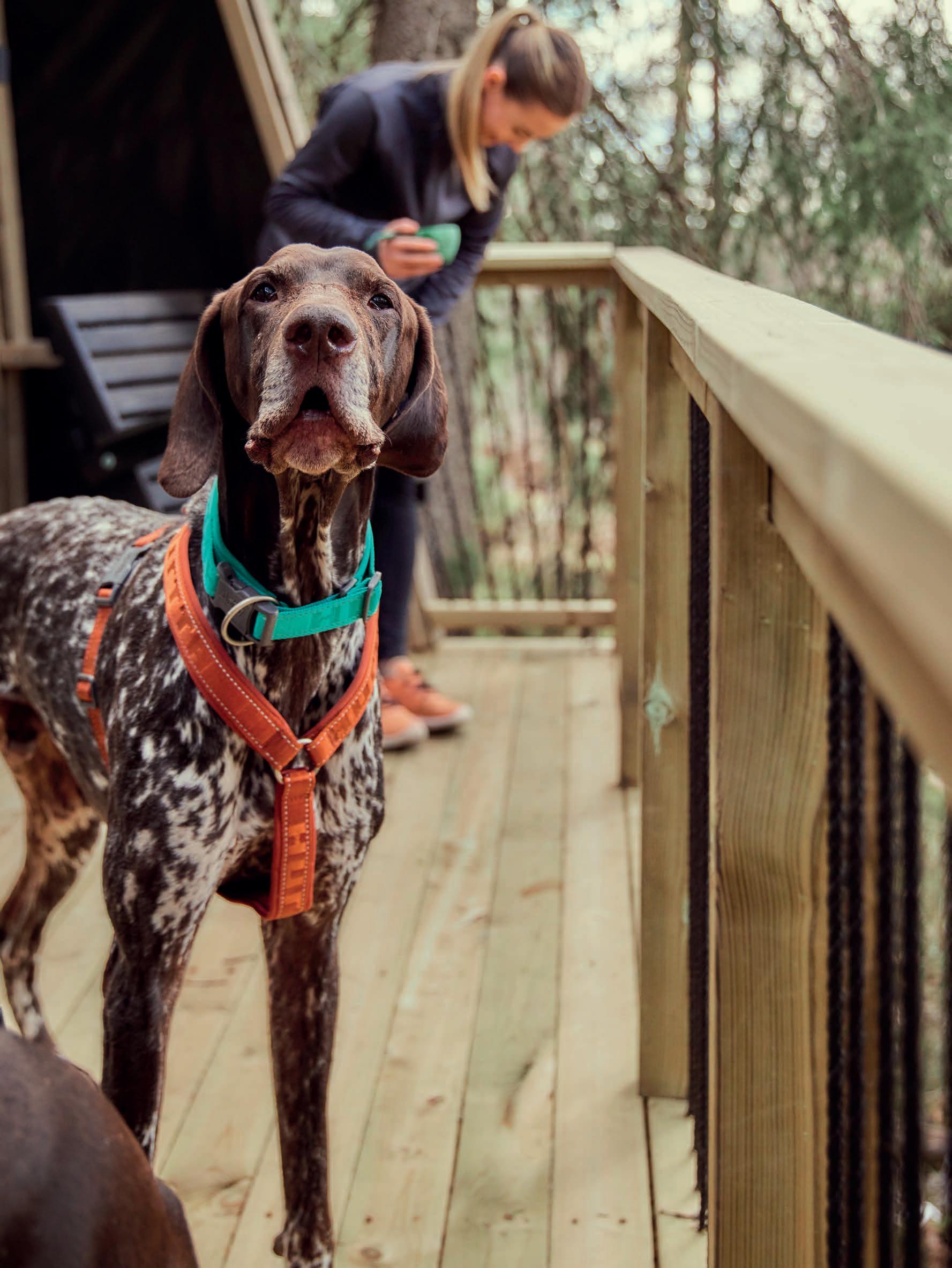
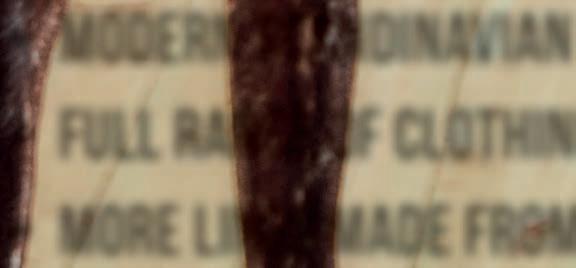
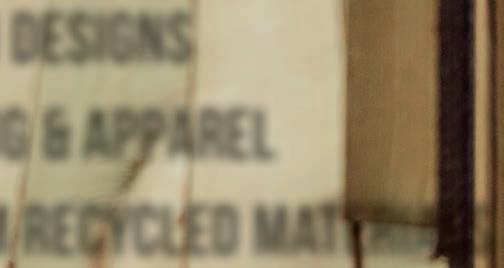


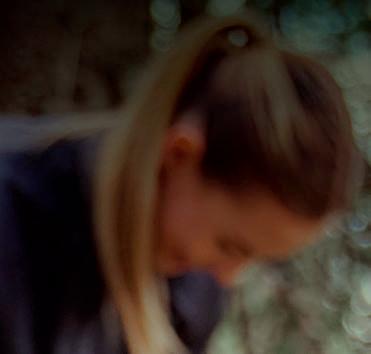

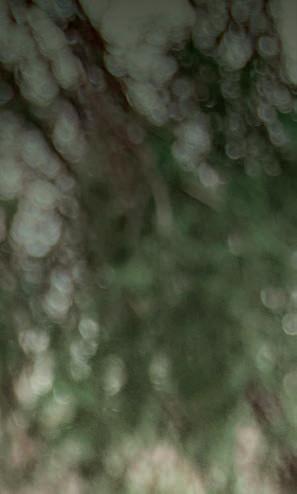




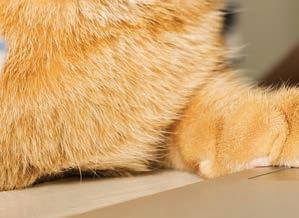

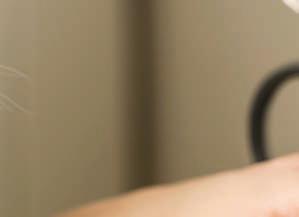
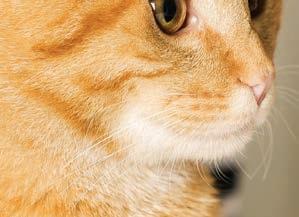
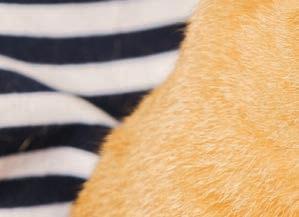
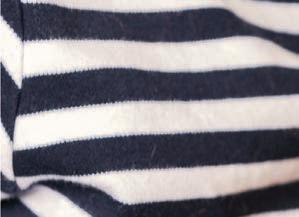

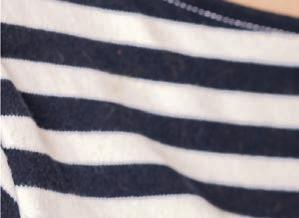
The cost-of-living crisis is still very much here. Interest rates have gone up and the UK is trying to ward off a recession. Times are tough for many of us. While we all continue to tighten our belts, we still want the best for our cats.
A YouGov survey from June 2022 revealed that 73% of cat owners had reported that the cost of looking after their feline companion had risen in the previous 12 months and 32% — almost one in three — of cat owners were worried about being able to care for their kitty.

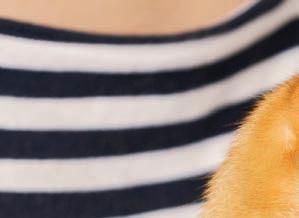
Here, we look at 10 ways you can save money without ever compromising your cat’s care.
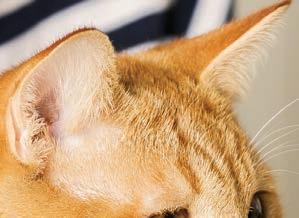



Feeding your cat is often the largest regular expense each month. There are several ways you can bring your kitty’s food bill down.
Do some digging and look in detail at what your cat’s food contains. You want to give your cat the best nutrition possible but you may be able to swap to a cheaper product without any impact on your cat.
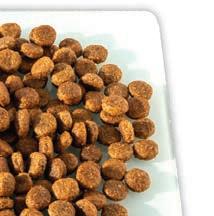
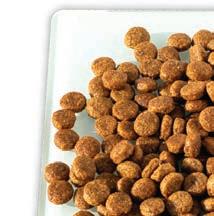

Whatever you feed your kitty, weigh out their food each time you feed them. It can be easy to just tip it in the bowl and as we love our cats, to give them more than they need. Weighing out their meals will mean that your feline doesn’t overeat (and put on unnecessary weight) and their food lasts as long as possible.


Whisper this one very quietly…cats don’t actually need treats. If you’re giving your cat a complete diet, you are providing all the nutrients their body needs. You should be deducting treats from their daily allowance of food to avoid them gaining too much weight. Often wanting to treat our cats is a human emotion.
If












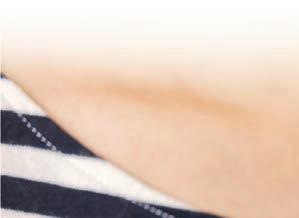
If you still really want to treat your cat, you could just reduce the amount of treats or give them some cooked
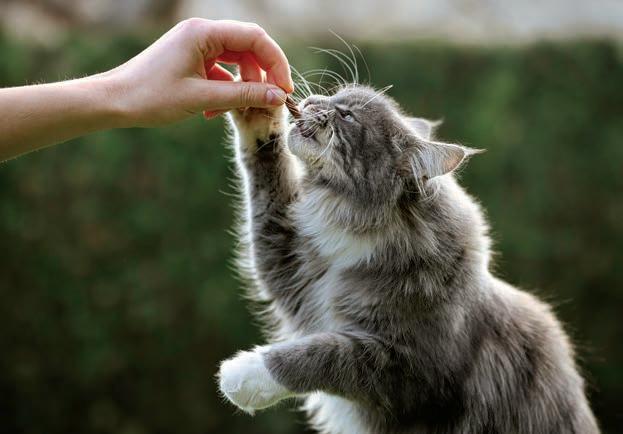
chicken when preparing your own meal
When it comes to the big purchases of cat food and litter, you are likely to be able to keep more cash in your pocket if you commit to buying in bulk or on subscription. Companies want to keep you buying from them, so will often entice you with a discount for signing up to a subscription. You can also often get discounts by shopping around. Speak to your pet shop retailer to ask if they offer bulk buying discounts.

Regularly cleaning out the litter tray has so many benefits. Your cat will appreciate it as we know how fastidious felines are, but it can also save you money. Cleaning out the litter tray as soon as you can after your cat has paid it a visit — particularly if you use a clumping litter — will help the litter to last longer. You can remove the soiled part of the litter and avoid having to remove the whole thing. You should still take the time to fully empty the tray and wash it out on a weekly basis, but cleaning it out daily will help maximise how long your litter lasts.
Don’t be tempted to get rid of your pet insurance. While it can often seem like you’re paying money for nothing, pet insurance could be literally a lifeline if your cat gets sick.
Imagine a situation where your cat gets seriously ill and needs expert medical care to save their life. With the right cover, you can gain thousands of pounds worth of veterinary care and give your cat the treatment you want to be able to provide.
Without it, you may end up not being able to get the treatment your cat needs which would be truly heartbreaking.
To get the price for your pet’s cover, shop around. Go online and compare prices and also ring up to get the best deal too. With a bit of effort, you will be able to make a good saving. As always with insurance, be sure to check exactly what your pet is and isn’t covered for. Before you pay for your premium, the insurance company will send you a document to explain all the terms and conditions, read this over carefully.
Insurance is one of those things that may not put money back in your pocket right now, but it can save you a fortune in the future.
Cats need quite a lot of resources — bowls, beds, scratching posts, carriers, and many more things that are available to help us care for our pets. There can be great value found in buying some of your cat’s stuff second hand, either from charity shops or off the internet. Facebook Marketplace can often be a great place for a bargain. Just a quick search reveals lots of feline products up for sale and many of these products have lots of life in them. The difference between buying all new products and pre-loved items can be quite considerable.
Before purchasing, check the items are in good condition (as you would when buying anything) and even consider whether it is something your cat really needs
While insurance will save you on expensive vet bills, thinking about your pet’s routine may help keep him out of danger that could result in a vet visit. For example, a cat fight could lead to a bite and an abscess, or ingesting something he shouldn’t could lead to your cat being poisoned.
Minimise the risk of harm by checking over your cat’s environment and routine. Check that all products that are potentially harmful to cats are locked away and that any
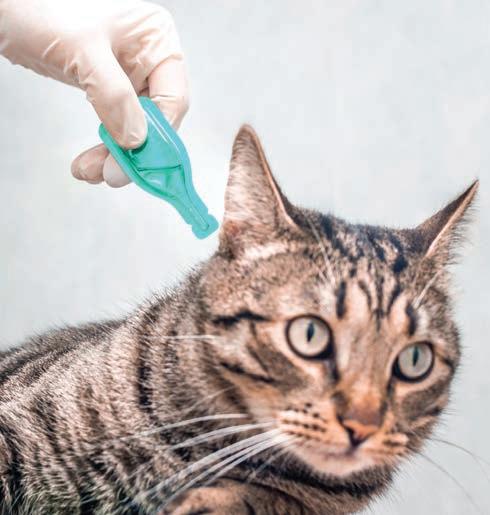
If you go away on holiday or need someone to pop in during the day to check on your kitty, you can save a lot of money if a friend is able to help, rather than paying someone. If they are a fellow cat owner, you can return the favour when they go away too.
Building a local community of cat lovers can be worth a try. Posting on Facebook asking to bring local cat owners together or setting up a WhatsApp group can be a brilliant way of all helping each other out, avoiding any potential feline conflicts, and a way of making new friends.
plants are not toxics to felines.
When it comes to your kitty’s routine, it could be a really good idea to keep him in at night. Locking the cat flap during darkness hours is proven to reduce the risk of your cat being hit by a car and makes it less likely that he will get into cat fights or mischief.
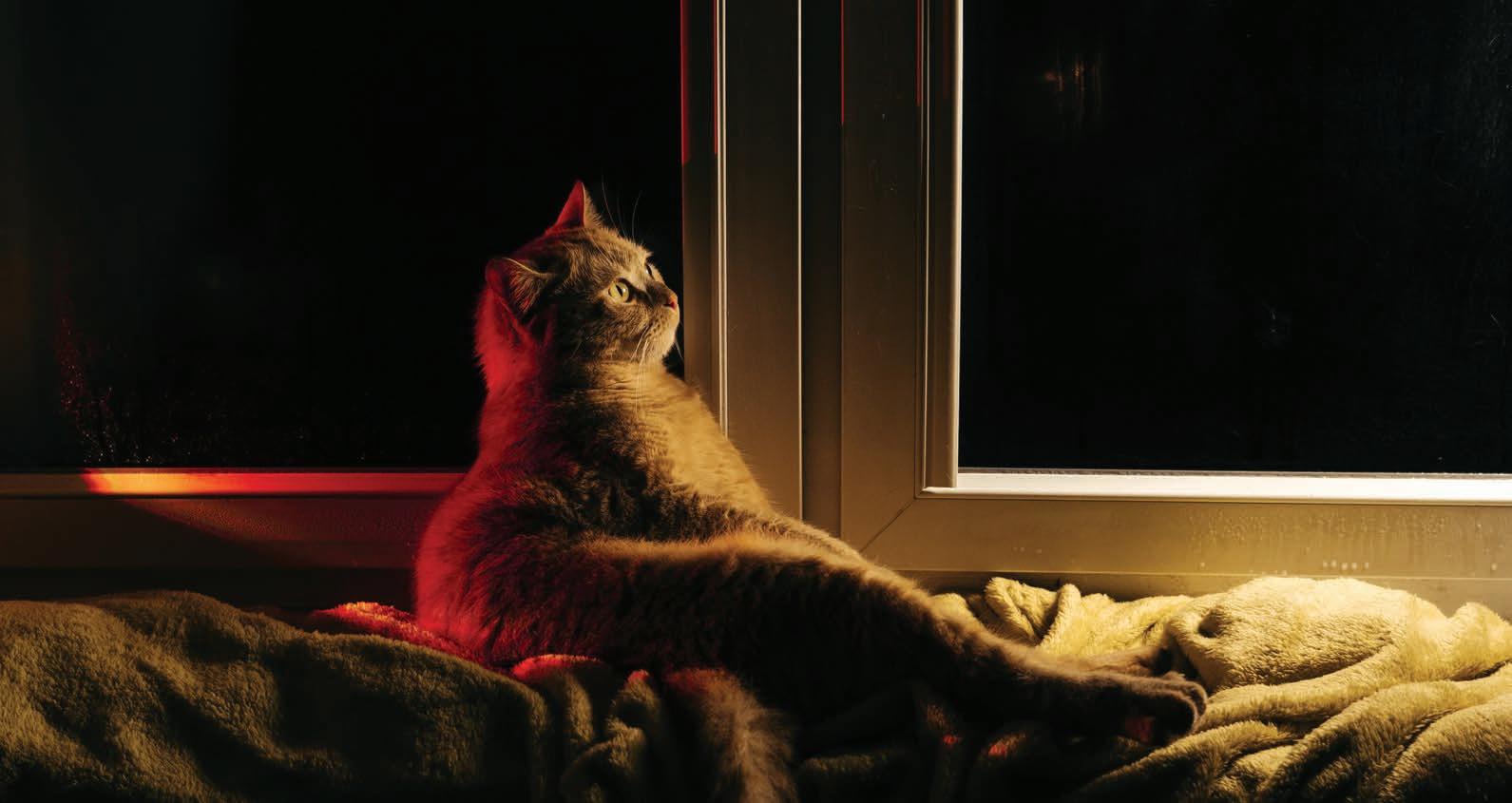
This is another tip that won’t put pounds back in your pocket, but could save you a good chunk on vet bills, and certainly a lot of heartache.
From flea and worm treatments, to annual vaccinations and dental care, all cats need regular treatment to prevent much more serious health problems. Do not be tempted to cut costs by not giving your cat the protection they need. The saving is almost certain to be a false economy as it will be far more expensive to treat your cat for the problems that arise — plus, it’s a serious risk to your cat’s health. Discuss with your vet the best value ways of providing all the preventative healthcare your cat needs.
Often the things our cats love the most don’t cost any money. Recycling old toilet roll tubes, cardboard boxes, and worn-out clothes is a great way to make low-cost toys. For example, you could try:
● Hiding some of your cat’s food ration in a toilet roll tube and folding up the ends. Watch as your cat loves working out the tasty reward.
● Take a cardboard box and make it a great hideaway for your kitty. Find a quiet spot for it and put inside a toy or treat. You can find loads of inspiration online for how to make some incredible hideaways from boxes.
● An old jumper or t-shirt can be perfect for making a DIY toy. Cut it into strips and knot them together in the middle. You can then dangle it for your cat to pounce on. There is absolutely tons of how-to videos online that will give you lots of inspiration and it can be really fun making something for your kitty! The Your Cat website (www. yourcat.co.uk) is a good place to start!
IF YOU ARE REALLY STRUGGLING, PLEASE REACH OUT AND ASK FOR HELP. THERE IS A LOT OF HELP OUT THERE:
● Help with vet fees — pet charities including PDSA and the RSPCA offer assistance with vet bills for those struggling to find the money. These services are often means tested.
● Pet food banks — as well as food banks often providing pet foods too, there are also specific pet food banks.
● Pet care — if you are really struggling to care for your pet, contact cat charities and independent rescues to see if they can help.
The cost of pet care is a reason often cited for people giving up their cats. Talking is always the best way to find the right solution for you and your pets. Asking for help is a brave thing to do and people will usually do everything they can to keep you with your cat.
Right from the start, scent plays a very important part in your dog’s life. Research even suggests that puppies begin developing and using their sense of smell while still in the womb. Certainly, they are born with it and, blind and deaf until two or three weeks old, they use smell along with touch to help them find their mother and her milk.
As the pups grow, so too does the importance of scent, becoming a huge part of how they experience the world; if vision is our primary sense, smell is certainly your dog’s. So, it’s well worth taking a closer look at how his nose works, and thinking about ways in which you can help him enjoy his fantastic super-sense to the utmost.
Whether pink, black, brown, blue, or spotted, the rhinarium — the hairless part of your dog’s nose which you can see (sometimes called the nose leather) — is where the smell adventures start. It’s a marvel of design in itself, and not just because every nasal pattern is as unique to each dog as fingerprints are to humans.
The nostrils (or nares) can wiggle independently of each other, which helps pick up on scents coming from different directions. They also each sample air separately, so in effect your dog smells in stereo. When investigating certain scents, the left one may be used for familiar and likeable odours
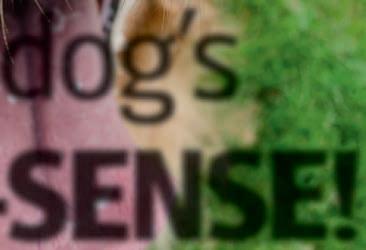
such as food, and the right one for arousing or threatening odours.
When your dog sniffs, air is inhaled through the round nostrils at the front of his nose, but when he breathes out, it leaves through the slits to the side. This means that he retains the inhaled scent rather than blowing it straight back out, and the tiny air currents created by the exhale actually help pull more of it in, helping to concentrate it.
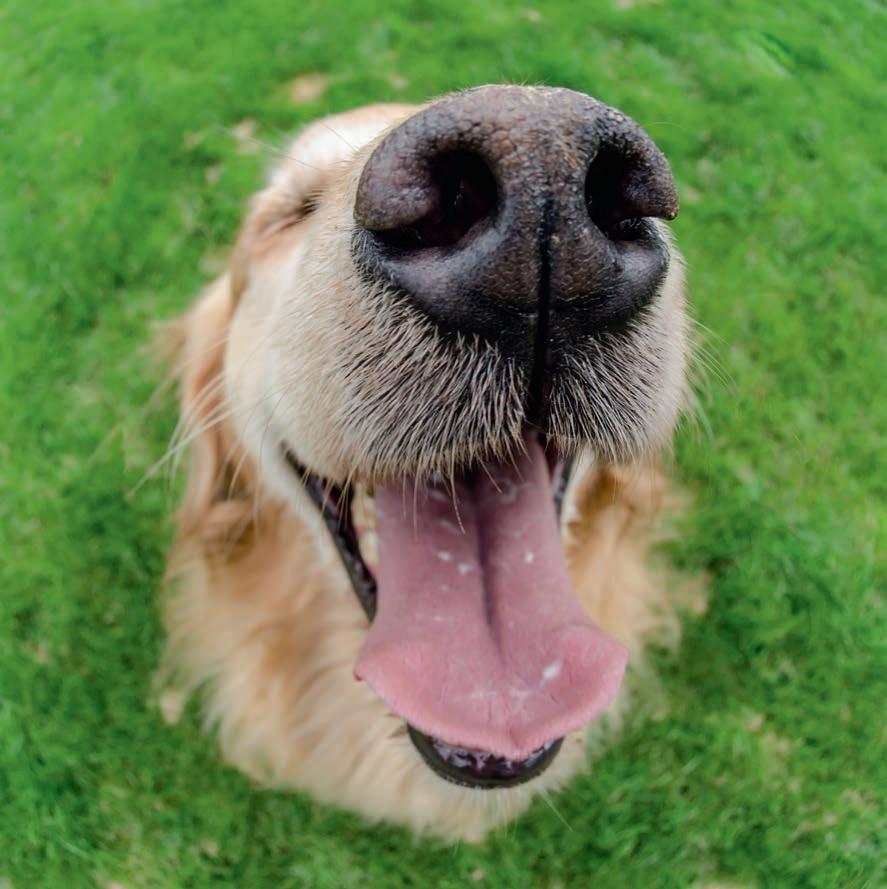
Smells are collected either by air-scenting, taking long sniffs, or when it is closer or on the ground, by increasing the sniff speed to maximise it. The average dog inhales around 30ml of air per sniff, and may sniff at a rate of around five to seven sniffs per second.
The nostrils are just the tip of the iceberg: behind them, the long muzzle contains a labyrinthine scroll-like bony structure of turbinates. These create a large surface area for the epithelium covering them, which contains scentdetecting cells.
Humans have around five million scent receptors, which sounds impressive until compared to a Beagle or German Shepherd, who both have around 225 million receptors.
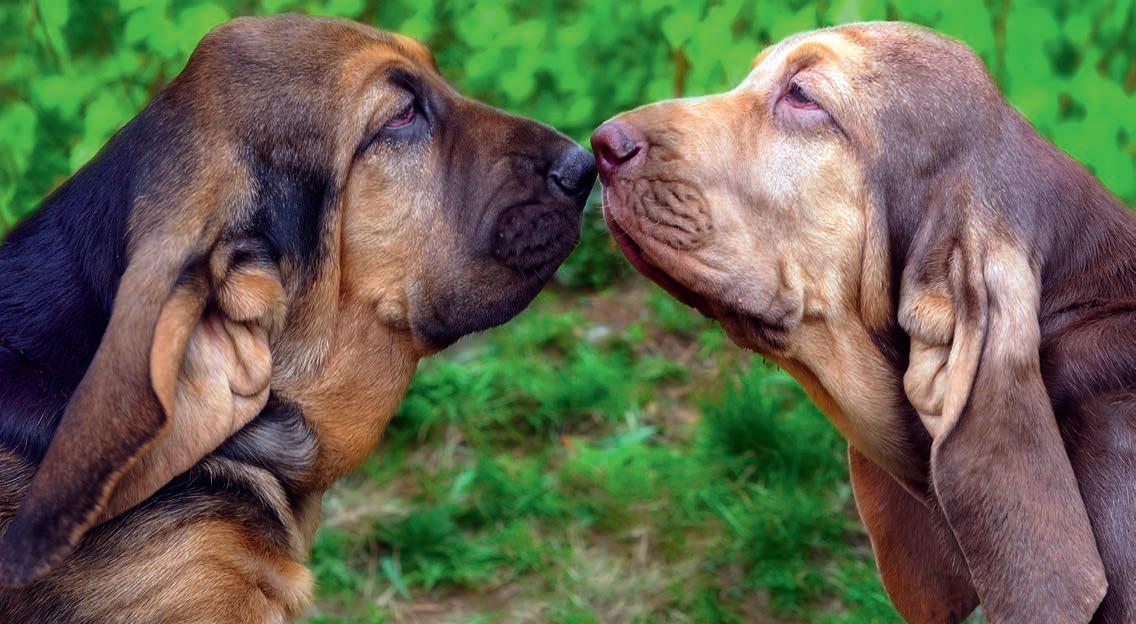
Top of the table though is the Bloodhound with an astonishing 300 million receptors.
Not surprisingly, a large portion of your dog’s brain is dedicated to analysing what all those odours picked up by the scent receptors are; the olfactory bulb is proportionally 40 times bigger than ours. Dogs also have an excellent olfactory memory, and once a scent is processed will remember it indefinitely.
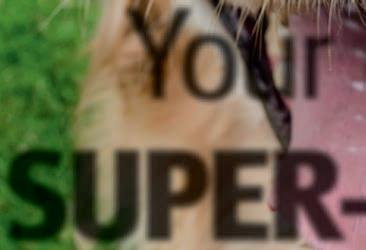
The damp surface of the nose helps scent particles to stick to it. When your dog licks his nose, these are transferred to
There’s no doubt about it — smell is hugely important to dogs.
Karen Bush takes a closer look at how your dog’s incredible nose works.
Your dog’s SUPER-SENSE! “
“When a dog approaches a person, it’s rarely an invitation for body contact...
the mouth so they can be investigated by the vomeronasal organ. Sometimes referred to as a ‘second nose’, this is located just above the roof of the mouth, and specifically detects pheromones. Pheromones are important chemical messages which primarily transmit information about readiness to mate and other sex-related details, but can also convey other information, such as aggression, fear, or comfort.


A well-known example of this is the dog-appeasing pheromone that a mother produces three – five days after giving birth, which reassures her puppies and gives them a sense of well-being, safety, and security. The synthetic versions commercially available can be helpful when youngsters are settling into new homes, and also appear to promote calmness and reduce anxiety during times of stress in adult dogs.
Sometimes a lick of the nose isn’t quite enough, and you’ll see your dog wrinkling his nose after sniffing something (such as a puddle of urine). Alternatively, he might look as though he’s grimacing, or he may chatter his teeth — all ways of drawing more pheromones into his mouth for analysis by the vomeronasal organ.
He may even be more direct and actually lap at the puddle — he’s not being disgusting, he’s just gathering information.
The long, drooping ears, which many sight hounds possess, are thought to help collect scent from the air and keep it close to the nose and face. Many sight hounds also have loose, moist lips, which are also said to help in trapping scent particles.
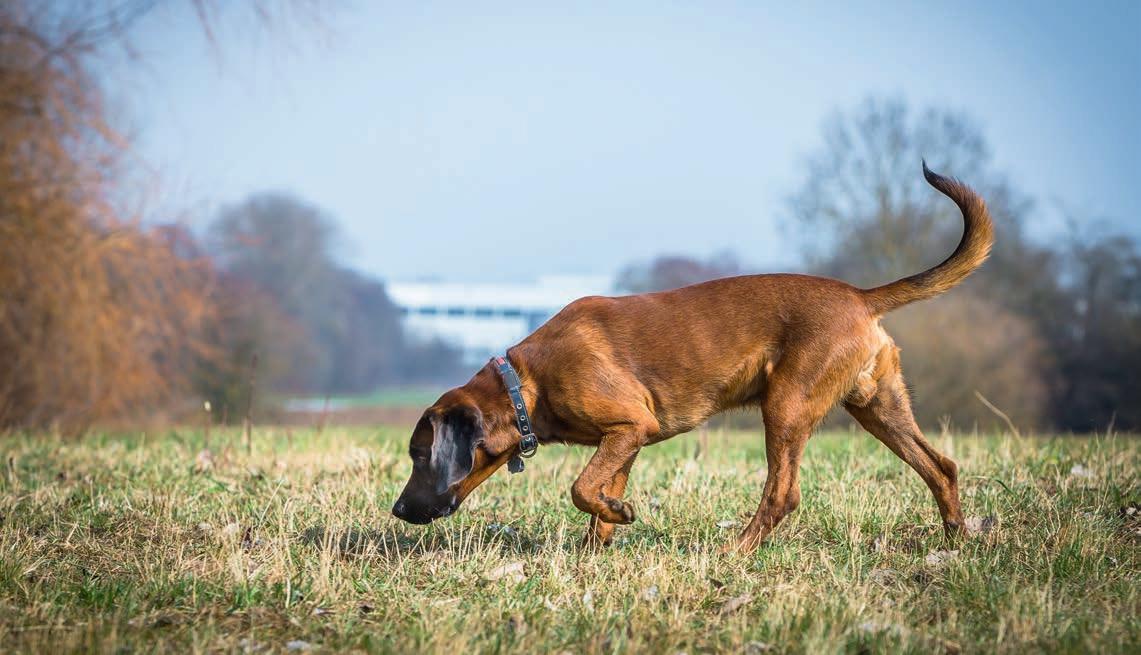

Sniffing is such a major part of your dog’s life that if you notice a lack of interest in scenting, take a closer look at him as it may indicate a health issue. A decrease or loss of smell may occur for a number of reasons, including pain or discomfort, inability to lower the head and neck to sniff, upper respiratory problems, a blow on the head damaging the olfactory nerve, chemotherapy treatment, and gastric issues.
“When a dog approaches a person, it’s rarely an invitation for body contact, although frequently misinterpreted as a request or permission for that person to interact,” said Sarah Fisher, founder of Animal Centred Education, which often incorporates scent into its learning methods. “When given the choice to approach someone at their own pace, dogs will often sniff that person’s shoe or leg, or hang back and scent the air, then move away. Think of this important
scent gathering process as the dog deciding if he would like that person’s phone number so he can start a conversation, rather than it being an invitation for a full-blown date.”
If you have a dog who is overexuberant or aroused when you have visitors, Sarah suggests letting the dog’s nose get to work. “Some dogs become really excited when familiar humans come to visit, particularly if those people are meaningful to them, and may jump up and/or take the person’s clothing or arm in their mouth. Giving a dog a toy to hold may meet the needs of some dogs but not others. Help reduce arousal around your visitor by asking them to bring something safe for the dog to carry, or shred, that bears their scent. It might be the sleeve of an old sweatshirt, an old pillow case knotted to minimise the risk of the dog tripping, a small towel or an old cloth napkin. Ask your guest to carry it close for a little while prior to arrival. Giving it to the dog provides him with the opportunity to obtain olfactory information without the need for him to lick or mouth the visitor to gather that important scent, and if he wants, he also has something meaningful to carry.
Along with touch, smell declines more slowly than the other senses as your dog ages; you may find that as a result your senior dog becomes more obsessed with sniffing while out and about.
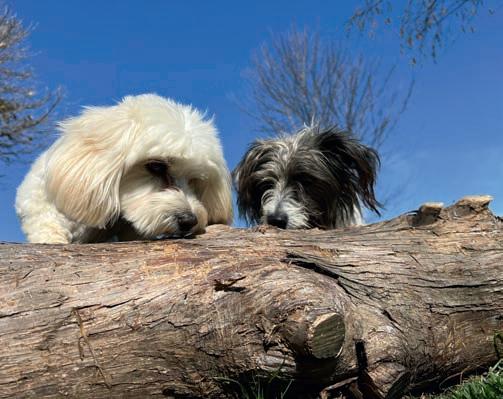
“If you have multiple visitors coming at the same time you can create a snuffle bag, asking each visitor to place their scent gift in the bag, which you can then offer to your dog. This gives him the chance to explore all the scents in his own time without having to approach each person to gather this vitally important information.”
● Find out more about Animal Centred Education at animalcentrededucation.co.uk and on Facebook at ACE Connections.
Given the importance of smell to dogs, it makes sense to incorporate it into games with your companion. You can hide food in special doggy puzzles and interactive toys and snuffle mats, but it’s even more fun when you join in the games with your dog.
Try tossing a treat for him to find while out on a walk, varying the direction, and as he gets better, the distance. You can do something similar at home; put your dog outside or in a different room, while you hide some treats.
Put them in accessible places, but at a variety of heights, such as on the seat of a chair as well as on the floor, before letting him in and encouraging him to sniff out all the goodies.



Think twice when considering whether your dog really needs a bath. Quite apart from his sensitive nose finding the fragrance of some grooming products overpowering, every hair follicle on his body is associated with pheromone-
releasing apocrine glands. Their secretions coat the fur, producing an odour signal individual to him and recognisable to other dogs — or at least until you remove it, even if only temporarily, which could explain the frantic rolling on rugs or grass afterwards!
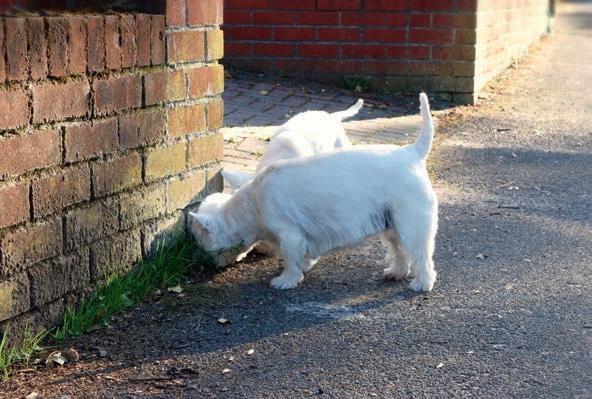
There can also be other onslaughts on your dog’s olfactory senses, such as plug-in scented diffusers and essential oil burners around the home. If you must use them, leave the door of the room open so your dog can move away if he wishes. And if he struggles with travelling in the car, try ditching the pongy air fresher dangling from your rear-view mirror!

“
“And if he struggles with travelling in the car, try ditching the pongy air fresher...Once a scent has been processed, your dog will remember it. Sniffing on a walk is a hugely rewarding activity for dogs.

According to Guinness World Records, the oldest rabbit ever was a wild rabbit called Flopsy who lived to the astonishing age of 18 years and 10 months. Flopsy was, of course, at one end of the spectrum, and longevity to quite this degree is not the reality for most pet rabbits.
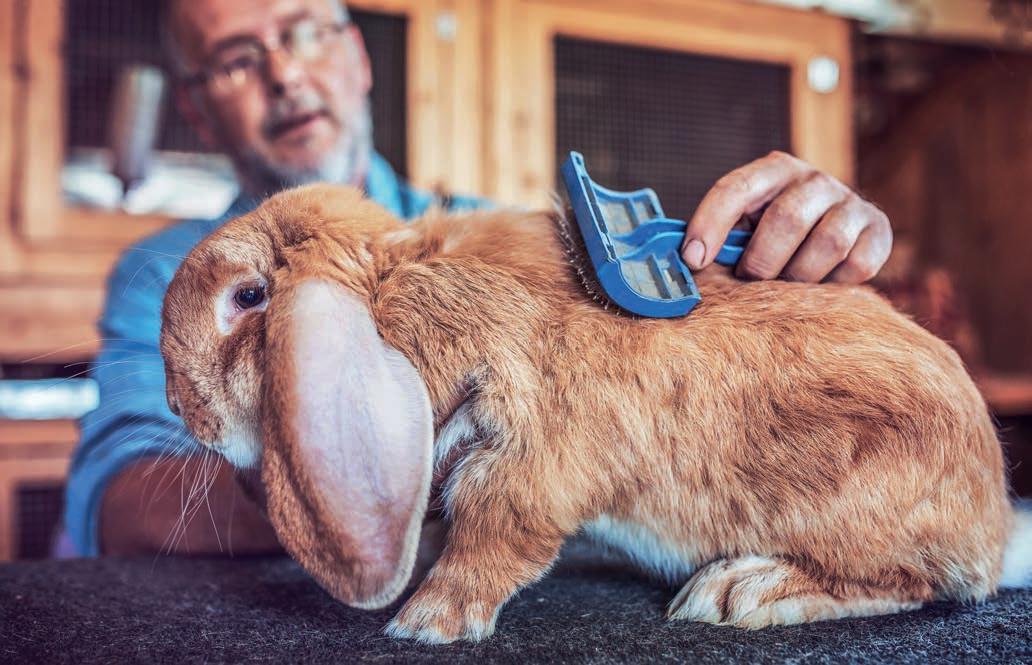
As recently as two decades ago, few rabbits lived to what we now consider as ‘old age’, with average lifespans in the region of five to seven years. However, with huge improvements made in rabbit nutrition and husbandry, as well as veterinary care and knowledge, the picture has changed. These days, owners can look forward to as many as 10 to 14 years with their pet.
When it comes to the wild rabbit population, figures vary, but on average, wild rabbits can expect to live a mere two or three years. As a prey species, longevity is not easily achieved, and many rabbits die in infancy. It is not just being predated on though. Pets benefit from a ready supply of high-quality species-specific nutrition not always available in the wild, and this plays a key role in a long and healthy life.
Just as in dogs, larger breeds tend to have a shorter life expectancy than smaller breeds and pure breeds have reduced longevity compared to mixed. So, for example, a Netherland dwarf might be expected to live to 12 or 13 years of age, whereas the equivalent figure for a French lop would be closer to six or seven years.
Just as important as genetics or breed-related trends though, is the role that nutrition plays in health and well-being.



Optimum nutrition is key to rabbit health and well-being and as knowledge has increased, dietary recommendations have evolved. Higher fibre diets and the ad lib feeding of hay has been instrumental in improving rabbit digestive and dental health. Recognition of the detrimental effects of sugar, with a focus on the importance of ‘no added sugar’ diets, has also been of great benefit. Diets that have become more aligned with natural nutrition and better supported small pet health and well-being, have been a major
contributor to increasing lifespans.

It is not just formulation of diets and nutritional knowledge that has advanced. New means of manufacturing nuggets have been developed including the advent of extruded diets. Extruded nuggets have a delicious crunchy texture that small pets love, with no need for sugary syrups to improve flavour or to act as binding agents.
Optimum nutrition may be key, but this means different things when a rabbit is young, growing and full of bounce, to when they are in their more senior years and enjoying a slower pace of life. Life stage diets are important for fulfilling these differing nutritional needs — a firm fixture in the dog and cat food category for many years, but a more recent addition when it comes to small pet nutrition.
Junior diets are tailored for young animals, giving them the best start in life. Science Selective Junior Rabbit Food has higher protein to support growth, correctly balanced calcium and phosphorus to support skeletal development, and all the essential amino acids young rabbits need. From the age of 20 weeks, gradually transitioning to Science Selective Adult Rabbit Food helps support continued health and well-being — high fibre promotes optimal dental and digestive health and reduces the risk of obesity, while calcium and phosphorus levels are optimised for adulthood.
With increasing life expectancies, diets tailored for senior years are becoming an ever more important part of the nutrition toolbox. After all, as lifespans increase, so do the number of older rabbits.
Recommending a senior diet, such as Science Selective Rabbit Four+ Food, is one of the best ways to support health and well-being in rabbits over the age of four years. Obesity and arthritis are two of the most common health issues in these older pets, so it is important to feed a diet that minimises
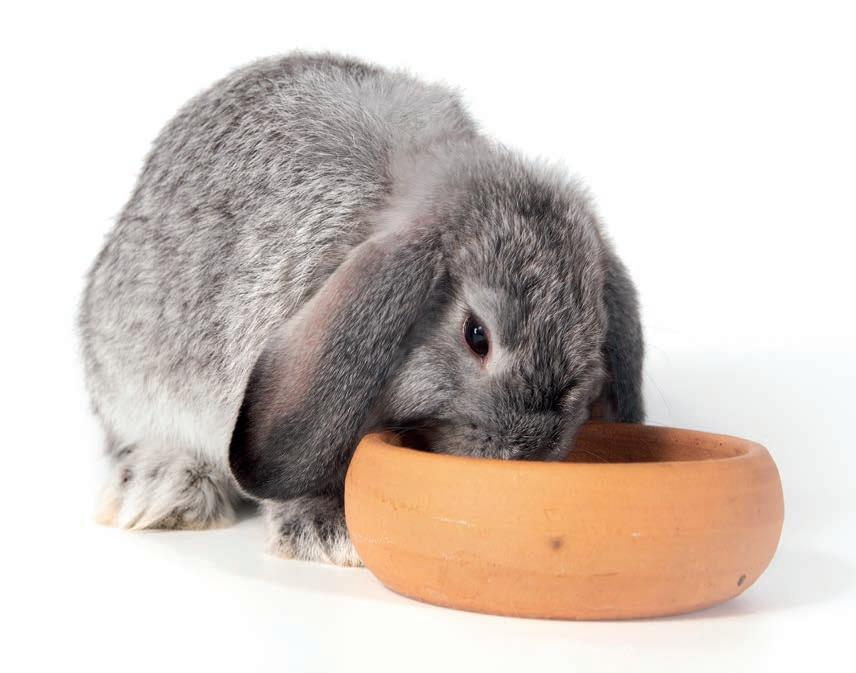
the risks of these conditions. Science Selective Rabbit Four+ Food has a reduced protein and energy content to help maintain a healthy weight, together with a calcium to phosphorus ratio optimised for joint support.
While expert nutritional and veterinary knowledge has helped advance rabbit nutrition, sharing knowledge with rabbit owners, is just as important. In fact, recent years have seen changes in the population demographics of owners. Dominated by Millennials and Generation Z, todays owners consider themselves as pet parents to their four-legged family members. They are often highly knowledgeable and keen to glean the latest information from reliable sources. Specialist pet retailers have played a large part in educating rabbit and other small pet owners, and in so doing, played an important role in improving the health of the nation’s rabbit population. Gaining a reputation as a great source of nutrition and husbandry advice also helps create bonded customers who return in-store time and again.
Supreme has a long-standing ethos of supporting retailers, with a comprehensive range of merchandising materials. From care guides to loyalty cards, free samples and money off next purchase coupons, Supreme’s POS materials are ideal for creating eye-catching in-store nutrition displays to start conversations and educate customers.




Knowledge has increased at all levels, from owners to retailers to petfood manufacturers and veterinary surgeons. This means that there are a growing number of rabbits reaching the realms of seniority. Just as in other species, advancing years means an increased risk of health problems such as arthritis. It can be challenging to detect signs of illness in rabbits. As prey animals, they naturally hide any signs of vulnerability or weakness. Where any concerns exist, owners should always be advised to get veterinary advice.
As well as appropriate veterinary care, rabbits with mobility issues may benefit from adjustments to their environment and husbandry. Retailers can improve the welfare of older pets with appropriate product suggestions, and this can also be a great way of increasing basket spend. As well as recommending Science Selective Four+ Rabbit Food, why not suggest:


● Anti-slip mats on tiled or wooden floors.
● Accessible litter trays, with a side cut out if necessary.
● Ramps to access higher levels of living accommodation.
● Nail clippers and grooming tools.
Huge strides have been made in recent years in terms of meeting the needs, nutritional and otherwise, of these popular pets. With increasing lifespans, comes increased commitment. With most pet rabbits expected to live for 10 years or more, making sure prospective owners are fully aware of the long-term commitment required is essential for all concerned.


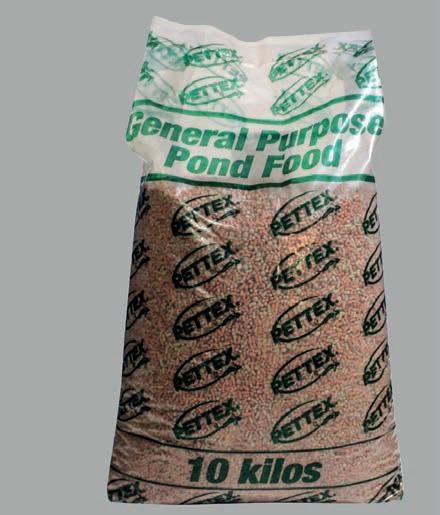




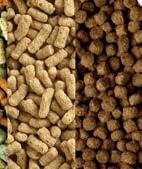







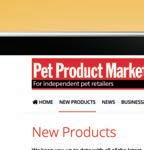

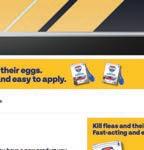





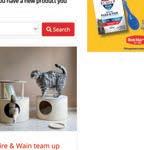


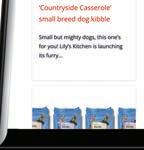
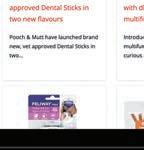
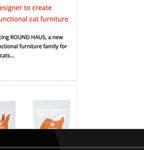




















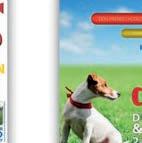


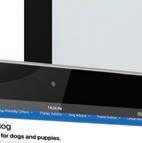





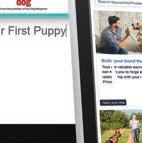
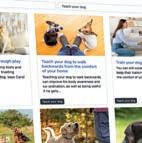









































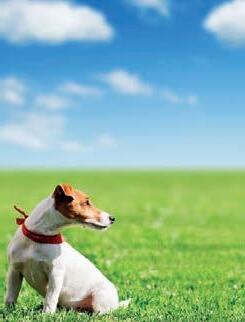

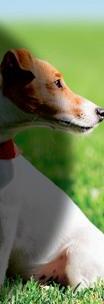
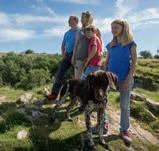






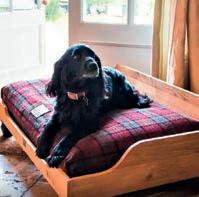





Naturalism is King and so it should be, well certainly in our modern version of the hobby. As thoughtful keepers, wanting to provide the very best care that we can for our charges and of course, leading them into fruitful and non-detrimental reproduction, it is taking lessons from the wild and implementing these into our care that is key. Yes, the strapline of ‘bio’ is quickly being replaced with ‘naturalism’ and I for one am very pleased.
Naturalism is building a scaled down replicant of the wild habitat of a species. This is, and will always be for me, the keeping method of choice. One can then further improve upon this decorative and provider correct approach by instilling a fully working bioactive culture. Yes, badbio is common and is not better care than fakery always. Naturalism is always best and can be made better with skilful bioactive inclusion.
We must accept, as I have said multiple times before, that it has taken each species unimaginable time to reach the level of development that they currently have and that each has done so in order to take and use fully the suppliers (providers) that exist around them in their own ecosystem. It therefore makes sense that if we as keepers can learn as much as we can about these providers and then build cages that invoke a sense of these habitats, we will, by definition, be providing an increased level of care. As opposed to an unnatural decorative style or enforced sterility and confinement. Allowing a species to live and move in the way that it does in the wild, providing it with the correct spectrum of and quantity of heat, and then the correct quantity of Ultraviolet, while also then boosting all of that with a full and varied diet, must be the way forwards.
Gone are the days of unnatural and worrisome plastic replicants — fakery in all of its nastiness is vanishing from our hobby. Plastics and resins do not hold or distribute heat naturally, they can harbour dirt (but be washed fairly simply), they do not look great at all, and age quickly under lighting and heating, and they can leech troublesome volatile organic compounds, such as cyanide, when they reach a certain temperature. Natural decoration, which granted can
be harder to clean, does not pose a risk of VOCs, it does look better, it does hold and distribute heat properly, and it is good for the physical and even mental well-being of the kept species.

If fakery is rightfully vanishing, then what do we as traders need to do in order to provide the correct forms of decoration and still earn a much-needed revenue? Well, we have to go back to our roots and history as a hobby and start to stock and sell a range of real stone, logs, branches, and plants for every type of biotope.
Cork slabs and rounds are useful, but they are certainly not on their own when it comes to materials that can be found at a wholesale level to sell in store. I have been using rough and smooth grape roots and tea bush branches. I then stick them together to create trees or fallen trees, depending on the orientation of the cage and the needs of its inhabitant. I have found this to be a fulfilling and quite creatively rewarding process. All of this I understand is available for you to retail.
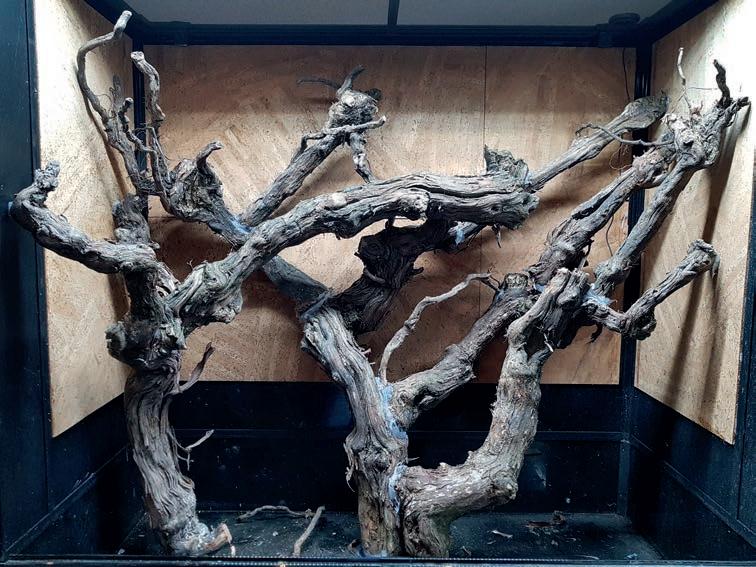
Plants can then be grown up/along or within these branches and we start to create a biotope that can be maintained by the keeper and used by the animal. This will help to create wild-like seclusion, reduce stressors for new arrivals, and will help to freshen the air and create natural lighting patterns of light and shade. We can then also look at what happens to the animal’s body tone or ‘body score’. Allowing an animal to live and move in the most natural way should inspire it to do so. This will allow the animal to become less inclined to being fat and become more healthy. This will also stimulate the mind and thus lower the chances of stress-related diseases.
Rock is just as vital as ‘sticks’ in this equation! Real stone can be a fantastic heat store, it can provide steady and safe basking areas, allow natural belly heat, tone the legs, and help keep nails in check for lizards. As we all know, not all rock is the same, so what should we be stocking?
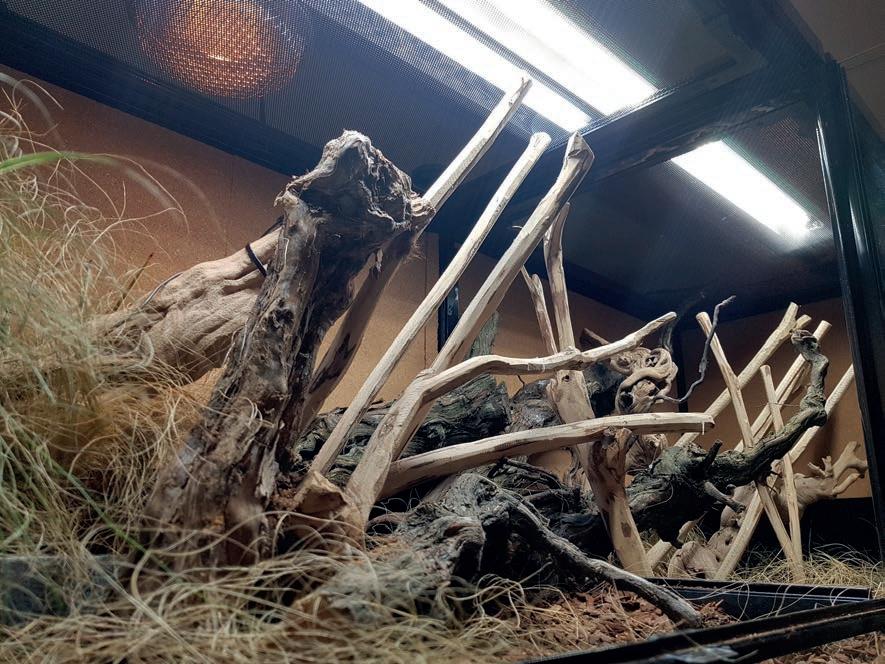
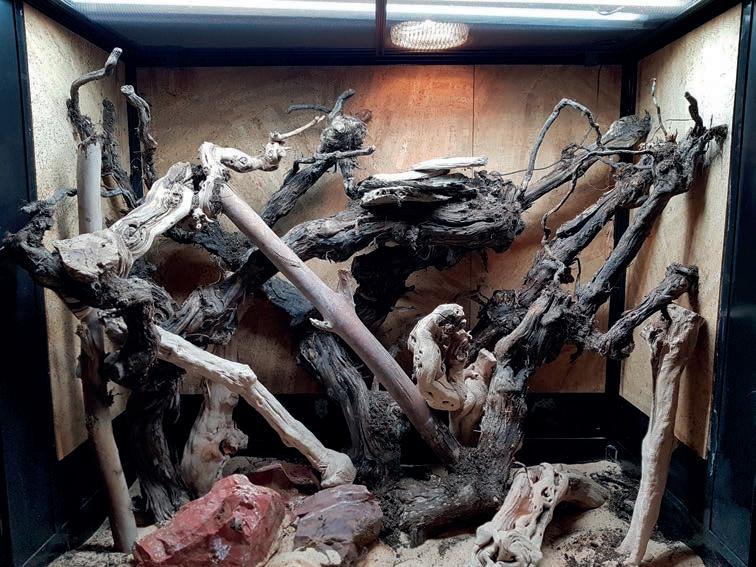
Well, certainly in the UK, dark coloured slate is a real boon! Slate is easy to clean, retains heat well, and is a safe surface that an animal can use. It is also available in thick

chunks and in tiles. Slate shale can be added to more arid systems which it will further help with heat distribution but also add naturalistic texture to the substrate. Ironstone is a great also, a thick, colourful and heavy stone that retains heat well and can be used to create structure.
Sandstones are useful and can be used in most enclosures. It is not as dense of course but it does retain heat and will allow the easy growing of mosses in tropical enclosures. This coupled with a natural and deep substrate will help maintain a wild-like level of humidity also, rather than using plastic tubs filled with moss to do so, why not build caves naturally, it will work just the same, if not better!
There are many forms of rock available to us, big pieces, small pieces, tile, or boulder and each will have a place in the hobby. For basking, we should be suggesting the use of dense rock which will hold and readmit heat as IR-C naturally, thus warming the air and providing belly warmth. Slate is my choice usually.
Weight is a concern for some of course and we can accommodate this. I have built hollow wooden boxes recently and then covered these in slate tiles. Not having to use a great pile of rock greatly decreases potential cage weight. I have found that this works very well and can be further decorated to create basking platforms.
I feel that in this exciting time everyone is writing about how great bio and naturalism is, and what plants can be kept and sold, but are we thinking about the framework of the build correctly and turning this into an effectively and ethically sold revenue stream that will benefit keeper, creature, and retailer?
My advice is to see what is available and make sure that you can offer good clean rocks and branches that will be safe to use, work as a revenue stream, and also reduce the chances of keepers foraging from unknown locations around the country which can increase health risks and disturb wild breeding locations in our own ecosystem. We should remove nothing from the wild, unless we we have permission and are 100% sure that we are not causing issues for native species.



this is why Ponting’s next tip for compliance is for organisations to “signpost consumers to any additional information which might affect their decision to purchase.” By way of example, Ponting says that “where green claims are made, say, on packaging or within media with limited space, additional, comprehensive information via website links or QR codes should be included.”
Another solution toward compliance is to train all staff involved, directly or indirectly, with the sales and marketing, including production of hard and soft copy materials, of the business’ services, products, or brand. It follows that records and evidence of training should be retained. At the same time, Ponting recommends introducing and implementing policies and procedures regarding the review, maintenance, correction, and updating of marketing material and other consumerfacing information. Here too an audit trail of all these efforts should be maintained.
Ponting’s final recommendation is that if or when any greenwashing complaint or allegation is made, immediate specialist legal advice should be sought. He says this because “depending on the circumstances, there are usually a number of dispute resolution tools that can be deployed in defence or settlement of any complaint.”
The authorities are taking more of an interest in the green claims that businesses are making about their products and services.
Greenwashing, the practice of making exaggerated claims about a business’ environmental credentials and the sustainability of its products, services, and environmental impact, can expose it to breaches of consumer protection legislation. The Competition and Markets Authority (CMA) is presently undertaking reviews of various sectors to examine the extent of the issue.





Understand the rules
To help businesses and duty holders understand how existing consumer protection law will be enforced in this area, the CMA published guidance in 2021 for businesses, in the form of the ‘Green Claims Code’, which centres on six principles.

They are that green claims made must be truthful and accurate; should be clear and unambiguous; claims should not omit or hide important information; comparative claims made should be fair and meaningful; claims made should consider the full life cycle of what is being discussed; and claims must be substantiated.


Aside from consumer protection from greenwashing in relation to goods, the topic is also a priority for the Financial Conduct Authority (FCA), especially where sustainable investment is involved, and the Advertising Standards Authority too.
The ‘green net’ has widened
But as well as the shift in regulatory focus, Stuart Ponting, a Regulatory Compliance Partner at Walker Morris, says that “pressure is mounting on businesses in all sectors to clean up their act by virtue of the trend towards ‘green litigation’ — that is, complaints and claims brought for a range of environmental or climate-related reasons.”

In his view, for a whole host of reasons, businesses should “take action to ensure
that green claims made in any and all sales, marketing, promotional, pre-contractual and contractual materials, and communications are accurate and can be substantiated.”
He points to the CMA’s ‘Green Claims Code’ and the FCA’s ‘Guiding principles on design, delivery and disclosure of ESG and sustainable investment funds’ that was published in July 2021 which he recommends businesses read and understand. Further, at the end of October 2022, the FCA proposed new rules to tackle greenwashing in relation to the provision of financial services in a document CP22/20.
There are some practical pointers that Ponting thinks should help businesses minimise the risk of inadvertent greenwashing or committing consumer protection breaches generally.

“First,” he says, “firms should take care that all information, online and in all other forms, that is gathered and presented to consumers — potential and actual — is accurate, fair, not deceptive, or misleading and does not leave out material facts.” This, for him, means “introducing and implementing specific safeguarding procedures” as to the currency, accuracy, and security of all such information. Before publication, he highly recommends stepping back, evaluating, looking at the evidence, and being satisfied that any claims can be backed-up.
Next, he explains that firms should note that broad-brush green claims are more likely to be misleading, inaccurate, or unsubstantiated than narrow, productor service-specific assertions. Businesses, Ponting says, ought to “create a culture that focuses on sales integrity and clearly demonstrable claims.”
Allied to this, Ponting emphasises that it’s important to tell only the truth. By extension, he says that “organisations should ensure that green claims do not contain partially correct or incorrect aspects and ensure that any applicable conditions or caveats are clearly and prominently explained.”
Similarly, claims should accurately represent the entire life cycle of a product or service. For Ponting, this is likely to involve businesses “proactively and regularly undertaking appropriate enquiries of other parties throughout the supply chain, as well as keeping their own house in order.” This also means considering whether systems and processes are adequate to manage this monitoring requirement.
And it shouldn’t be forgotten that features or benefits that are necessary standards or legal requirements of a given product or service type should not be claimed as environmental benefits either.




But it’s not all about the written word. As Ponting points out, “green claims can also be made via visual graphics. In fact, recent FCA findings suggest that logos, medals, or other visual ‘rating’ assertions carry significant weight with consumers and can therefore carry a particularly significant risk of greenwashing where apparent quality and credibility cannot be substantiated.”
As a result, he says that businesses should ensure that both written green claims and any visual graphics or symbols used “are critically assessed from the perspective of what a consumer will take them to mean — businesses need to consider the whole picture.”



Of course, information is everything. And
It’s patently clear that consumers are taking greater time to choose and buy products and services that are causing less harm — or even promoting positive benefits — to the environment. However, when false claims are made, consumer protection law gives consumers protection while, at the same time, protects businesses from unfair competition. From the CMA’s recent activity, it seems it won’t hesitate to act if there are concerns that consumer protection is being threatened.
“
“Another solution toward compliance is to train all staff involved, directly or indirectly, with the sales and marketing...


Woodgreen say:
Despite many reports and articles out there claiming that hamsters go into hibernation over the winter months, pet hamsters should not hibernate. During the process of hibernation, an animal’s metabolism slows down to allow them to reduce the amount of energy they’re using. This causes them to enter a deep sleep for a long period of time. Our pet hamsters are not able to do this.
It can actually be very dangerous for hamsters to do this. When hamsters get too cold, they can go into a state called ‘torpor’. This puts them at serious risk of hypothermia and the result could be fatal.
What does torpor mean?
Torpor is the name of an involuntary state of reduced mental or motor activity. It’s a survival tactic which is automatically triggered when an animal gets too cold or if they have limited access to food and water. In torpor, the body temperature will lower along with the heart rate and metabolic rate for short periods of time.
Is my hamster in torpor?
There are some early signs of torpor to look out for. You might notice your hamster sleeping more than normal or being lethargic. You may even notice them shivering or shaking.
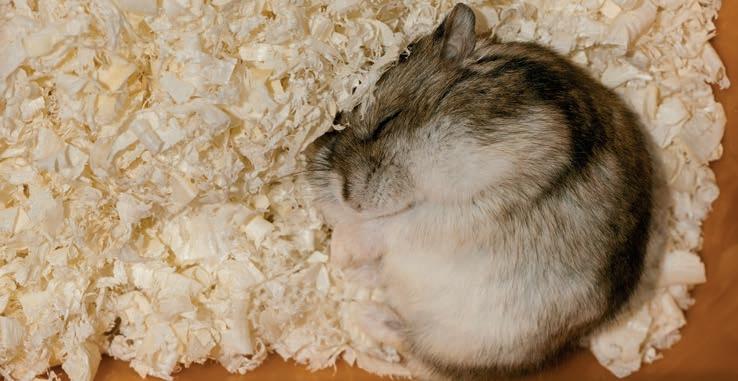
A hamster in a deep state of torpor will be limp and unresponsive to both touch and sound.
You may find them curled up into a ball as they will be trying to keep as warm as possible.
When you do touch them, they may feel cold to the touch. Pick your hamster up and look carefully for any signs of breathing – you may only notice very slow, shallow breaths. When you stroke them, look out for some small movements in their whiskers.
What should I do if my hamster is in torpor?
If your hamster is in torpor, or you suspect they are, move them into a warm room. Handle them very carefully and gently pick them up. Lightly stroking and handling them may help them warm up and encourage them to gradually wake up. Holding your hamster close to your body, or having skin-to-skin contact may also help to raise their body temperature. You can also try warming them up carefully, by using a warm heat pad or warm water bottle wrapped in a towel – just make sure they’re not too hot.
Finally, take them to the vet’s as soon as possible.
How can I prevent my hamster going into torpor?
Hamsters go into this torpid state when exposed to cold temperatures. The best way to prevent this is to make sure the room they’re in is kept at around 18 – 21C all year round.
In the colder winter months, if their room cannot be kept at this temperature, move them into a warmer area of the house away from any draughts.
Provide your hamster with lots of bedding and soft paper/tissue bedding for nesting with – the more you can give them the better!
Check on your hamster regularly – this will help you to notice any changes quickly.
Woodgreen Pets Charity helps pets and people at every step of the way. As well as being a safe haven for vulnerable pets in need of urgent care and a loving new home, Woodgreen provides expert advice and hands-on support to pet owners in need of a guiding hand. With almost 100 years’ experience in rehabilitating and rehoming pets, the charity is committed to making sure that pets have the best lives possible. This vital work is only possible thanks to the generosity of supporters. Find out how you can make a difference to pets in need at woodgreen.org.uk
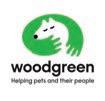
My dog has very long claws, despite him having them trimmed by my groomer every few weeks. I’ve noticed that he chews at them too, although they don’t seem to cause him discomfort. What problems can long claws cause?
Vicky says: Without seeing a picture of your dog, it is hard to assess if his nails are too long. Different types of dog have different shaped feet and claws. Sight hounds and Lurchers have a ‘hare foot’, which is quite long and flat with forward pointing nails which act like running spikes at speed.
Gundog breeds tend towards a ‘cat foot’, which is rounder with shorter nails, and some breeds like Boxers and Pugs tend towards very short, downward-pointing nails. The tip of the nail should just touch the ground when the dog is standing and won’t make much of a noise when walking on hard ground.
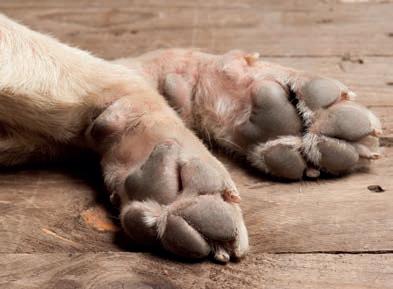
Long nails can cause pain if they curl around and grow into the pads. This is most common in breeds with an upright foot like Pugs but can also happen with dew claws, especially back dew claws. Long nails can also cause discomfort in the foot by altering pressure on the toes; this is something I often see in older dogs who need more regular nail trimming as they don’t walk as much, or arthritis may alter how their nails wear.
VICKY PAYNE BVetMed, MRCVS is a holistic vet based in East Sussex.
Just like humans, some cats snore. The snoring noise occurs when air cannot move freely through the nose and throat, making the tissues vibrate.
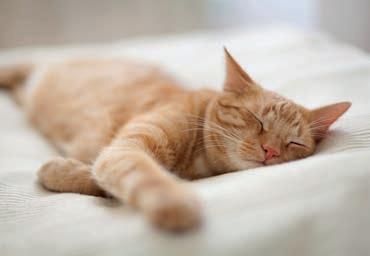
In healthy cats, this occurs when the animal is fully relaxed in a deep sleep, not in the rapid eye movement (REM) phase of the sleep cycle. During the REM or dreaming phase of sleep, cats are more likely to twitch than snore. Overweight cats are more likely to snore than slim ones. The fat builds up around their upper airways, narrowing their oxygen intake. Slim your cat down to a normal weight and there is a good chance they will stop snoring — or at least snore less loudly!
Cats who sleep in a strange position, which interferes with their breathing, may snore when asleep. Their snoring can be interrupted if they are moved to a more ordinary position. Brachycephalic or short-nosed breeds like Persians, Exotic Shorthairs, and Himalayan cats are likely to snore due to the pushed-in shape of their skull. The shape of their head can result in narrowed nostrils, nasal passages, and nasopharynx (the connection of the nose to the mouth). Some of these cats may also have an elongated soft palate — the soft tissue that forms the top of the mouth. This can partially block the entrance to the windpipe. These abnormalities can be so severe that these cats not only snore while they sleep, but they also may have difficulty breathing when they are awake. Vets call this the brachycephalic airways syndrome, and it is also found in brachycephalic dog breeds like bulldogs.
Cats with really severe breathing difficulties need to see a vet. When awake, they may make a high-pitched noise called ‘stridor’ (as in ‘strident’) or a low snoring noise called ‘stertor’ (as in ‘stertorious’). Coughing and wheezing or laboured breathing with the neck extended are also symptoms that need veterinary help.
Finally, respiratory infections like colds or flu, or allergies, lead to inflammation of the nasal tissue and, therefore, to snoring. Occasionally, snoring may result from a foreign body like a grass seed being caught in the nose. If a cat who normally sleeps silently starts snoring, it needs to be checked out.
How do I choose the right breed of cat for my lifestyle?
Each breed presents its own set of unique requirements, making it especially important that you choose the right cat for your household and lifestyle.
Pedigree cats have been selectively bred to enhance certain physical and behavioural characteristics that some owners find desirable, while mixed-breed cats (moggies) have a diverse range of characteristics and also make great companions. If you have specific features and traits in mind, a pedigree cat may be what you’re looking for. Although cats may display many similar characteristics, there are differences between breeds that are important to factor into your decision.
Do you want an active cat?
Cats’ energy levels vary greatly. Do you have a lifestyle that can cater to a breed that is known to be highly energetic, active, and need heaps of stimulation, such as the Bengal? If you are out of the house for long periods, then perhaps these breeds are not for you. Persians, on the other hand, tend to be more easy-going and relaxed. However, while Persians are more placid, they do come with luxurious coats, which brings us to our next point.
How much grooming do you want to do?
Levels of grooming should be considered when choosing which breed of cat is suited for your lifestyle. Persians, for example, require more maintenance than Siamese. Longhaired cats are considered stunning, but they also require more upkeep. Most breeds of long-haired cats have coats that can mat easily and daily grooming is required. Grooming is part of the commitment.
Do you have a young family?
Some cats, like Birmans, are bred for their tolerant, easy-going natures, often making them the perfect cat to fit into a younger family. However, make your choice based on your lifestyle and family environment, including the ages and characters of your children.
In a nutshell, carefully take time to think about what sort of trait you would like in your new feline friend — an athletic cat, active cat, pal cat, or a talkative cat. Once you’ve narrowed down your selection, it’s a good idea to talk to people who have experience with the breeds you’re interested in. Try searching online for forums and social media groups centred around certain breeds, and perhaps discuss the breed with your vet.
Finally, there are 100’s of gorgeous cats in rescue centres all over the UK. Each comes with a unique character and personality. The rescue centre always tries to match the cat to the right owner so you can discuss the type of cat you’re looking for with their knowledgeable staff.
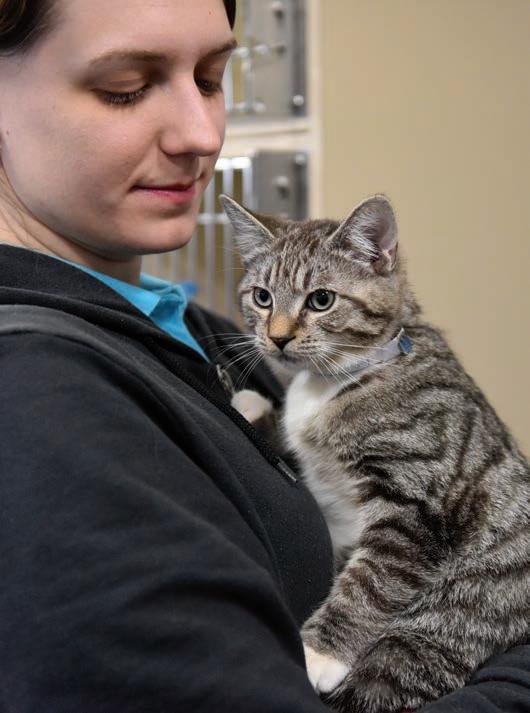
I’ve read that growling isn’t just your dog behaving aggressively, in fact there are many different types of growl all with different meanings. Can you tell me more?
Tamsin says: Growling commonly communicates that a dog is becoming increasingly uncomfortable with whatever’s happening at that particular moment, such as worrying about what something or someone might do next, or because they’re experiencing physical pain (a vet should always rule out pain/physical discomfort).
This is a dog’s way of saying: “I’m not happy about this situation.” You can therefore take immediate action to help him feel safer, for example by encouraging him away from something he’s worried about or by moving it away from him, or by preventing anyone from interacting with him, or leaving him alone ourselves.
Just as you might exclaim loudly in exasperation, growling can also express frustration, for example when something doesn’t happen as expected. Dogs might also growl during play, especially if this is physically strenuous. Some might also give a little modified growl/ groan when being scratched/fussed in a body area
they’re unable to reach very well themselves, like the pleasure of having an itch relieved.
Context and body language when growling are key! For example, playful growling with relaxed movement is very different from fearful growling, with stiff body, ears pinned back, and tail tucked beneath, at a stranger who appears unexpectedly.
It’s important never to scold a dog for growling because he might learn there’s no point in growling when he’s worried, because you don’t listen and get cross. Next time he’s worried, he might feel he needs to communicate this by snapping instead!
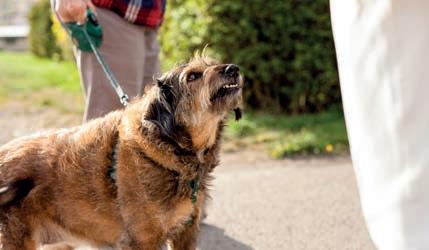
Finding the ‘super power’ rewards
The first step is to ensure you have some really exciting rewards. This is vital if you are going to use your recall outdoors as many cats find being outside really exciting. Therefore, you need to have a selection of rewards that are even more exciting so that your cat really does deem it worthwhile to come back to you. We want to use those ‘super power’ rewards. Find out what treats your cat loves most and what games he likes best.
Begin to train
First, choose the word you will use as the command to come to you. It’s best to avoid using only your cat’s name, as he may not understand that you want him to approach you. Thus, calling the name is just used to get the cat’s attention and then a new special word becomes the command to come to us. At first, your cat will not know what this new word suddenly being directed at him means, so you’ll need to teach him. Start your training at a time when your cat is keen to interact. Place yourself at the cat’s level and call his name to get his attention. Then use your chosen command. Follow this immediately by what you normally do to get your cat to come to you: some owners rub their fingers together, for example. As soon as your cat reaches you, reward with your chosen treat. If your cat does not normally come to you easily, try luring him using a food treat or a game. Say his name followed by your command and then show your cat the food you have — let him sniff it but do not let him eat it until he is beside you. If
you wish to use a game, entice your cat to come to you by moving the toy and play with him once he approaches you.
For a cat that is more nervous of approaching, build this stage up gradually by placing several treats in a path towards you after saying your cat’s name and command. Gradually, you will be able to remove the lure.
Once this is working reliably and your cat is coming to you on hearing his name and command, start to increase the distance between you, eventually from different rooms in this house. Having rewarded your cat for coming to you, give him the opportunity to leave again if he wishes. You don’t want him to think coming to you means restraint but instead leads to something tasty or fun.
Training
If your cat has outdoor access and you are at the stage where your cat will come to you from different locations in your house, it is time to start trying it outdoors. Start in your garden while your cat is still close to the house. You started your training in the home at a very close distance to your cat and when he was hungry, feeling affectionate or playful, so do the same outside. Try it in many locations in the garden, luring your cat in different directions including towards the door of the house.
It is really important to use your ‘super power’ rewards now you are outdoors. When your cat comes to you, reward and praise, then let him explore again. It is really important to recall your cat at times when you do not actually need him to come indoors so that he does not learn that coming to you always ends in being brought inside. This could be considered by your cat as ‘a negative end’ to his reaction, which could cause the power of your recall to diminish.
Initially, you may just reward your cat for coming to the door, but build this up to rewarding him for coming into the house and give him his reward inside. This way you prevent creating the situation where the cat will come to you but not come inside.
Once the recall is fully established, you do not need to reward the recall with a treat every single time your cat comes. This will keep him interested in the task as he’ll never quite know which recall will bring the treat. However, only go to this stage once you can reliably get your cat to come whenever you call him. If at any stage he stops coming when you call, go back to the initial training stages.
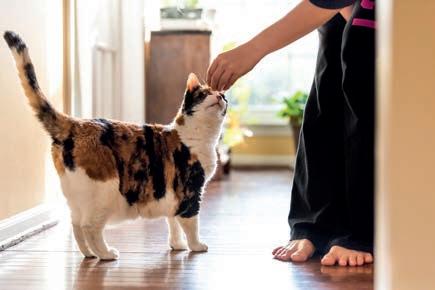
How can I teach my cat to come when called?TAMSIN DURSTON is a canine behaviour officer in Dogs Trust’s canine behaviour and research team.
Bereavement is inevitable and as an employer, you will at some point be faced with an employee who has lost a loved one.
At such times, it can be challenging to find the right balance between protecting an employee’s emotional well-being and maintaining business operations. But what legal responsibilities do employers have in such instances?
It’s important that managers discuss compassionate leave from a practical and sympathetic perspective so that bereaved employees don’t suffer in silence.
Outside of statutory parental bereavement leave, matters surrounding bereavement or compassionate leave are not clearly defined within UK Employment Law. However, the Employment Rights Act 1996 does state that employees have the right to take ‘a reasonable amount of time’ off work to deal with emergencies relating to ‘dependents’, such as a spouse, civil partner, child, parent, or any person who is reliant upon them for their physical care.
Unless specified within a contract of employment or standalone policy, the law does not stipulate what is a reasonable amount of time for bereavement, although it’s commonly considered to be around two to five days. However, this should be reviewed on a case-by-case basis, taking into consideration the nature of the employee’s relationship to the deceased, and the circumstances surrounding their passing.
Employees wanting time off over and above what was initially agreed should request it as soon as practicable. Often, extended bereavement leave will be unpaid and granted at the employer’s discretion. However, employers should be mindful


of their legal responsibility to protect an employee’s well-being under The Health and Safety at Work Act 1974 and The Management of Health and Safety at Work Regulations 1999. This means not forcing the return to work where depression or anxiety is a consideration, and the careful assessment of progress or risk once the individual is back in post.
If an extended absence is due to mental health issues resulting from the bereavement, a fit note should be provided as the employee could be entitled to paid sickness leave under their contractual terms.
Whether an employee is entitled to bereavement pay is reliant upon what it states within their contract, but generally, businesses specify a rate of bereavement pay within their terms and conditions.
Employers must ensure that employees on bereavement leave are not treated unfairly due to their absence from work. They must be given equal opportunity to apply for promotion or undertake training, and they cannot be made redundant simply because they have been physically absent. Should an employee feel they have been treated unfairly as a result of their absence following a bereavement, they may have grounds for a tribunal claim.
Religious beliefs and customs must also be respected and accommodated when considering the length of leave. For example, under the Equality Act 2010, denying an employee sufficient time to perform religious mourning rituals that form a part of their faith could be considered indirect discrimination.
Parents or primary carers who have suffered the loss of a child under the age of 18 are treated differently under UK law, with the
Parental Bereavement (Leave and Pay) Act stating that those affected are entitled to two weeks of parental bereavement leave and/or statutory parental bereavement pay.
To qualify for statutory bereavement pay, an employee must have been employed for at least 26 weeks before their bereavement, which is presently (2022-23) set at either £156.66 a week, or 90 percent of their average weekly earnings, whichever is lowest. Those who have not reached this service threshold are entitled to two weeks of unpaid parental bereavement leave.

The law also safeguards the rights of employees who suffer a stillbirth after 24 weeks of pregnancy, by granting them 52 weeks of maternity leave and pay.
All the employee’s standard employment rights are protected throughout this time, including their rights to pay rises and accrue annual leave.
Some employers will have a specific bereavement policy as this can remove the necessity for negotiation at what is a challenging time. Where written, such policies should clarify how the time off will be treated; how much time off can be reasonably expected; what the employee will be paid during bereavement leave; mechanisms for reporting a bereavement; the employer’s position if the deceased isn’t defined as a ‘dependant’ under the Employment Act; and how the return to work will be handled.
Whether an absence is through illness or on compassionate grounds, the employer has a duty to maintain regular contact and to accommodate any reasonable requests which will facilitate a return to work.
Managers should be mindful that bereavement can lead to substantial changes in personal circumstances, such as with childcare arrangements or increased financial burden. Employees may need to alter their working patterns or undertake a slightly different role in order to manage their new responsibilities or work through practical matters related to their loss.

Wherever possible, an agile approach is recommended. This could mean proposing part-time hours, flexible or hybrid working, or a staggered return to duties.
Grief is not finite, and neither is the effect it can have personally. Significant days or anniversaries may decrease someone’s capacity to function normally, so sensitivity around these times, particularly if further leave is requested, is paramount.

Employers should provide regular one-toones with the affected party once they have returned to work so that their progress can be monitored. This will ensure that the lines of communication are kept open, and any issues are brought to the fore as and when they occur, so as not to adversely affect productivity. Bereavement should also be taken into consideration during performance reviews so as to not unjustly impact an individual’s employment record.
The key to managing an employee’s bereavement effectively is empathy. Treating others the way you would hope to be treated if it were you, is the most practical and sensitive way to show your support. Creating a safe and nurturing space in which the bereaved can work without judgement will help ensure they remain engaged, loyal, and integrated within the team.


Acas, the Government’s conciliation service, advocates, via a page entitled ‘Time off work for bereavement’ for employers to have a policy that covers time off and pay for bereavement. Its reasoning is that such a policy helps to make clear how much time off and pay staff are entitled to, and how managers can respond and support staff after a death.
But even if there is a policy, Acas says that “employers should make some allowances. For example, a policy might say that an employee should tell their line manager about a bereavement straight away. But a recently bereaved person might not feel emotionally able to do this. They might be off work for a few days before telling their line manager about the death.”
As to what a bereavement policy should include, Acas says that key considerations for employers to codify are how soon the bereavement should be reported; who can report it, possibly a member of the employee’s family if the employee is not able to do it themselves; who it should be reported to (the employee’s line manager for example); what happens if the person who died is not a child or dependant; how much leave is provided along with how much pay is provided; how the leave is classed by the employer (compassionate or bereavement); what happens if an employee needs more time off than stated in the policy; and how the employee’s return to work is managed — whether they can return on reduced hours if they’re not ready to return full time.
Acas says that if there’s no bereavement policy, the employer must follow the law while trying to be as fair as possible. Ultimately, Acas says that “it’s good practice to support your employees as much as you can.”

We’re heading into holiday season and most dog owners will have plans to get away with their pets. Here, we share advice you can use on social media on all aspects of going on holiday with your dog.
Travelling with dogs is all a matter of physics — variables and constants that need to be weighed up to maximise the comfort and safety of your dog, while minimising driver distraction.
Rule 57 of the Highway Code states: “When in a vehicle, make sure dogs or other animals are suitably restrained so they cannot distract you while you are driving or injure you, or themselves, if you stop quickly. A seat belt harness, pet carrier, dog cage, or dog guard are ways of restraining animals in cars.”
Choices tend to fall under four categories:
● Pet carriers/tubes/kennels. Usually made of fabric/mesh, they are portable and lightweight so easier to remove when needed. They can be fixed onto the back seat or in the boot space of a hatchback or estate vehicle.
● Dog cages/crates. These come in a variety of sizes or can be custom-made. Robust and secure, they are the gold standard, offering protection as well as containment. They should be of sufficient height/depth to allow your dog to change position, but not to walk around.
● Pet-safety harnesses/tethers. These are the equivalent of dog seat belts, but it is important to ensure that a travel harness is used as opposed to a walking harness. Never attach a tether to a collar.
● Dog guards. These fit between the boot and the back passenger seats, limiting dogs’ access to the body of the car to minimise driver distraction, although drivers need to ensure that their dogs do not obscure visibility. Dog guards offer little protection for the dog in the event of a collision.
When it comes to packing your bag for your trip, don’t forget that you’ll need to sort out all your dogs items too. Have a checklist to ensure that nothing vital is left behind, either at home or at your holiday destination:
Lead
Check that the stitching is sound and take a spare one in case you mislay or lose it. If you use an extending lead, pack a short lead, as many dog-friendly attractions will only welcome canine visitors on short leads.
Bedding
The familiarity of his own bed will help your dog settle in a strange place — and remember that most hotels prefer that he doesn’t share yours! If he has a rigid style bed and you have the room to take it, fine; otherwise a beanbag, duvetstyle or one of the squashy basket or nest-type beds are less awkward to transport.
Jacket
If the weather is rainy, having a lightweight jacket which you can pop on your pet will mean you don’t have quite such a sodden mess of smelly, wet dog to dry out on returning back to your accommodation.
Towels
Pack plenty, so you can dry off any wet, muddy coats and paws before taking you dog indoors.
Dog food
Take enough for the whole of your stay, as you may not be able to buy any further supplies of your dog’s usual food, and sudden changes can cause tummy upsets. If you use canned food which doesn’t have a pull top, take a can opener too, plus a fork to mix the ingredients.
Food bowl
If you dog is a messy eater, also take a plastic pet place mat.
Travelling water bowl
Handy for keeping in the car, this avoids mishaps if it gets tipped over. It can also double up as a water bowl in your room, especially if your dog’s a sloppy drinker.
Water container
Pack a plastic bottle which you can refill each day with fresh drinking water to ensure your dog has a drink while he is out exploring. Take a collapsible water bowl too, so you have something to pour his drinking water into; these are light and easy to carry.
Poo bags
Take plenty!
First-aid kit
It’s always sensible to have at least a basic kit with you. If you are going to be in an area where ticks are going to be a problem, remember to take tick-removing products: don’t forget to also include any ongoing medication to cover the holiday period.
Sunshade for cars
The interiors of cars can become unbearably hot when parked in sunny weather. Shades will help to keep the temperature down and make the car more bearable for you to return to. Park in a shady area as well when possible. Shades or no shade, never leave your dog in the car on warm days, even for a short period.

Stain remover

‘Little accidents’ can occasionally happen, even if your dog is normally perfectly house-trained.



Kitchen roll
Handy not just for cleaning up any of the aforementioned accidents, but also for wiping food bowls and utensils.
Lint brush or pet hair roller
For removing any doggy fuzz that gets left behind on places where it shouldn’t be!
Documentation






If you are taking your dog abroad, make sure you have all the correct documentation with you: keep it all together in a wallet or folder so you can access it easily when necessary. Have it with you at all times as some countries can be very strict about insisting that you produce it instantly when asked.
Corkscrew
These can be a godsend during picnics or when eating out in a pub beer gardens, allowing you to tether your dog securely rather than having to keep hold of his lead the whole time.
An old sheet
If you cannot guarantee that your dog won’t climb on to furniture or the bed in your room, then at least take a couple of old sheets to spread over them to keep them clean.
Bumbag/rucksack
Take a bumbag or rucksack in which you can pop everything you will need for the day-it will be easy to carry and leaves your hands free.
Torch
This may come in handy for late-night walks.
Brush
If it rains and your dogs coat gets wet, you may need to brush it to prevent mats forming.
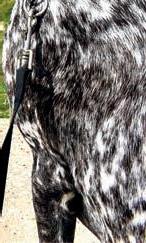
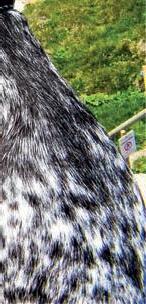
Holiday tips
● Make sure your pet is insured, not just for accidents and illness, but also for third party liability. Look through your policy to check that cover for damage to property is included. Dogs can sometimes be out of character in new and unfamiliar surroundings.
● Your dog may feel a bit anxious or home sick at first because of the change in routine and environment. Rescue Remedy and other flower remedies or Adaptil spray may help settle nervous dogs.
● Jot down addresses and telephone numbers of all the useful contacts you may need while on holiday, such as vets, pubs, your accommodation, and tourist information offices. Carry them with you in a small notebook which you





On these pages, we want to give you content that you can use on your social media channels. Any independent pet shop is welcome (and encouraged!) to copy any of the information on this page. We want to create a useful resource for you to make posting on social media that bit easier!
can put in your pocket.
● Find out where the nearest veterinary practice is, so you know how to get there should an emergency arise.
● Research whether there are kennels or a pet-sitting service nearby should you wish to go sightseeing at a place where dogs are not welcomed.
Just because you are on holiday, it does not mean all your dog’s manners should go out of the window.
● Do not allow your dog to annoy other guests if staying at a hotel or B&B — not all people are dog lovers. Find out from your host where dogs are allowed to go within the accommodation and outside.
● Always pick up your dog’s poo in the grounds and gardens, and ask where waste bags should be disposed.
● Exercise caution when approaching strange dogs; although your pet may be well socialised and friendly, other people’s dogs may not be.
● Do not ignore signs which ask for dogs to be on a lead, as this could be for his safety as well as others.
● Check whether attractions and sights are dog friendly before travelling there.
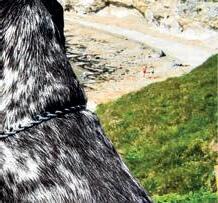



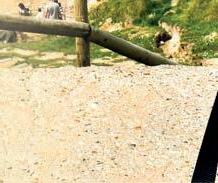
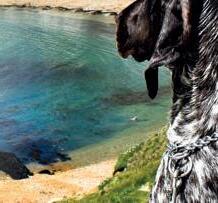
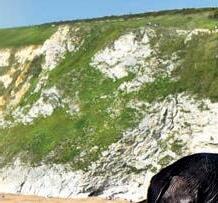
Having just booked a dog-friendly holiday, if your pet has never stayed overnight anywhere else, how can you help him settle during the break?
1 A confident dog should adjust to this new situation without feeling much stress. However, anxious dogs can take longer to adjust. Make your holiday property as familiar as possible by bringing your dog’s bed and any blankets he uses so that he has his own scent there.
2 Ensure that you take some pet calming products with you, such as Pet Remedy or Adaptil, which starts to help within minutes and is ideal for travel and unfamiliar surroundings! Stress can upset sensitive digestions too, so stick to his regular diet and try to keep to his normal routine if possible.
3 On arriving at the property, show him where he is expected to toilet so you avoid accidents and initially take him out often so he doesn’t toilet in the wrong place before he learns the layout.
4 Bring his toys so he has outlets for play rather than having to find inappropriate items around the property.
5 Ensure the garden is secure — check it so you can be confident of your dog’s safety.
Social media is very visual and posts with pictures usually receive far more engagement than without. There are websites where you can find free images you can use, even for commercial use. These include pixabay.com and unsplash.com Search for royalty free images online and check the terms do allow you to use them, and you will find some stunning photography!

The war in Ukraine has been dominating headlines around the world since Putin’s Russia invaded its neighbouring country in February 2022, with countries from all corners of the world coming to the aid of Ukrainians.
While many have been offering their homes to refugees and bringing aid to its borders, many charities have also been doing what they can to help the country’s animals too. Wendy Lloyd, from Solihull, has been one such person distributing aid at the Ukraine border, and seeing locals and aid workers evacuating thousands of cats and dogs.

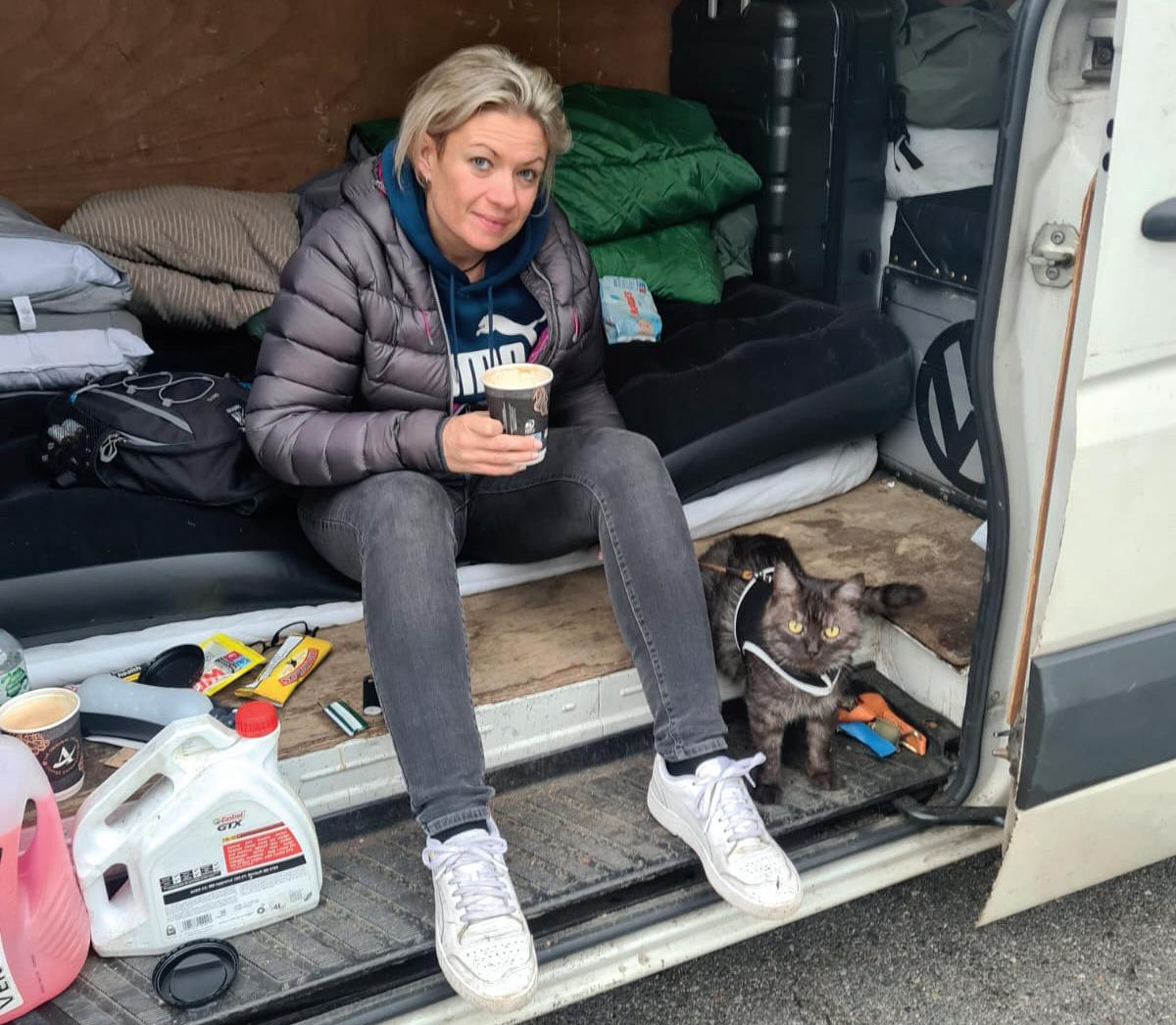
“Every now and then, there would be a huge kerfuffle as someone would turn up with a van full of animals that
had been rescued and we needed to find somewhere to take them,” she said.
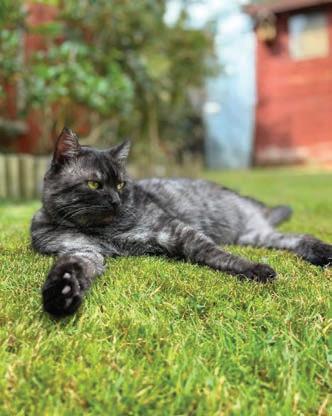
Due to so many pets being left behind when cities were being bombed, pets were released by their owners to give them a chance of survival and then rescued by local people and taken out of the city.
Before long, Wendy and the team were made aware of a makeshift shelter high up in the mountains made of five or six shacks, where dozens of cats were being kept by a local woman.
“The smell when we walked in there was overpowering,” Wendy remembered. “The cats were all so sick as they hadn’t been vaccinated and the woman who had rescued them had just taken them off the streets and got them to safety, where they were just staying in one of these rooms.”
After the cats had received some veterinary attention, she decided, even though she wasn’t a cat person, that she wanted to take one cat with her so that even one would have a fighting chance.
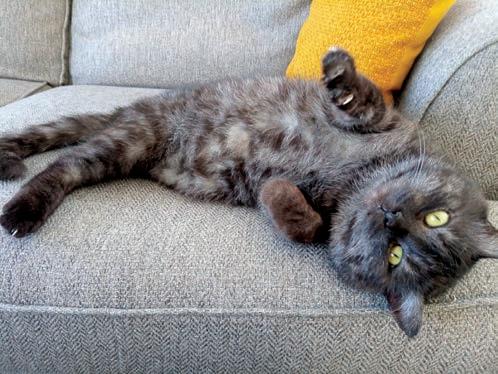
She spotted a very sad-looking cat with gunky eyes looking very sorry for himself, and using Google Translate, told the woman caring for the cats she wanted to take him, but the woman said no because “he’s only got three legs — no-one wants a three-legged cat!” It transpired that this poor cat had lost his leg when he was hit by a car.
“He looked at me with these really sad, gunky eyes and I had to take him, but we weren’t sure he’d survive the journey,” Wendy said. “But we had to give him a chance.”
The team managed to strike a deal with the woman caring for those cats: they would buy her a veterinary IV machine to administer medicine to the remaining cats and
she’d let Wendy take the three-legged cat. They rushed Rocket, as he had become known, to the vet’s in Kiev and he was vaccinated and given medication and was on his way home to Birmingham with Wendy.
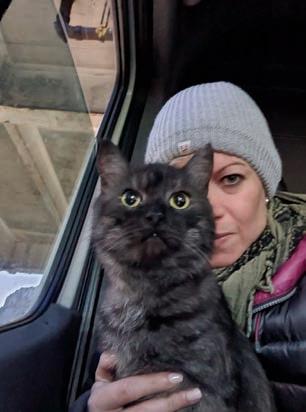
A new local celebrity
Rocket settled right into Wendy’s life and the duo lived with Wendy’s friend for a time on their return from Ukraine — and he gave Wendy quite the scare on their very first night together!
“When we first got him home, he completely disappeared. I couldn’t believe we got him all the way here from Ukraine only to lose him in Solihull!” Wendy said. Many tearfilled hours later, Rocket finally came home at around 1.30am when he jumped through an open window, soaking wet, as if nothing had happened.
Quite the escape artist, Rocket then went for a jaunt across the rooftops!
Admittedly not a cat person at heart, Wendy said that this little smokey-coloured, threelegged cat has completely melted her heart
“He’s turned out to be such a fantastic cat and he’s won me over. Luckily, he’s not had any medical problems affecting him, and he’s perfectly healthy.” He even goes to the local pub in Solihull with Wendy, where he has become something of a local celebrity, and has joined Wendy on their road trips around Europe.
Wendy said that while many aid workers have been giving Ukrainian dogs and cats homes here in the UK, she does believe that pets should be kept in Ukraine where possible.
“There are plenty of safe spaces where people’s pets are being looked after,” Wendy said. “We’ve seen so many times that people who have had to leave their pets when fleeing their homes have come back to get their pets and they’ve been taken away by people rescuing them, so people haven’t been able to find their pets and it’s heart-breaking.”
In the meantime, the war on Ukraine shows no sign of ending and Wendy is still helping people and animals over there.
“All the shelters in Ukraine are completely overrun,” Wendy said. “I know of one woman who’s caring for hundreds of dogs and all she can afford to do is feed them, but not clean out all the rooms so they’re living in their own mess and they’re getting sicker and sicker.
“The locals are doing what they can but they don’t have the money or the resources.
“There are plans at present to create a ‘super shelter’ in Ukraine to help ease the pressure on the local people, but more than £100,000 needs to be raised to create the shelter and all its associated resources.”
Journalist Wendy Lloyd wasn’t a cat person, until her heart was melted by a three-legged cat she rescued from war-torn Ukraine! Here’s her incredible story.
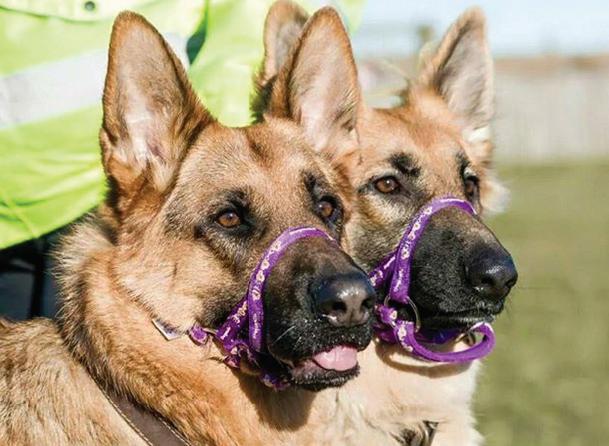
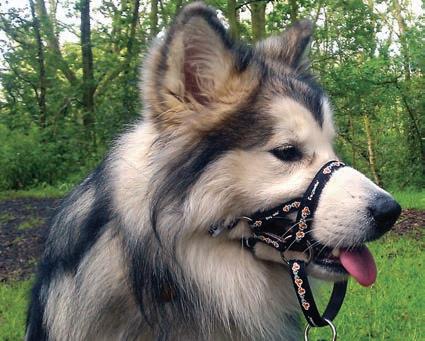
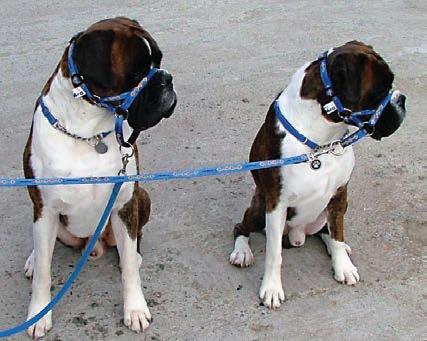
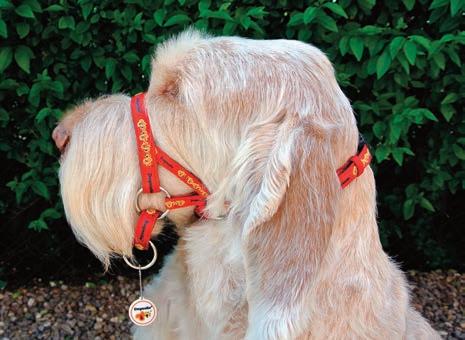
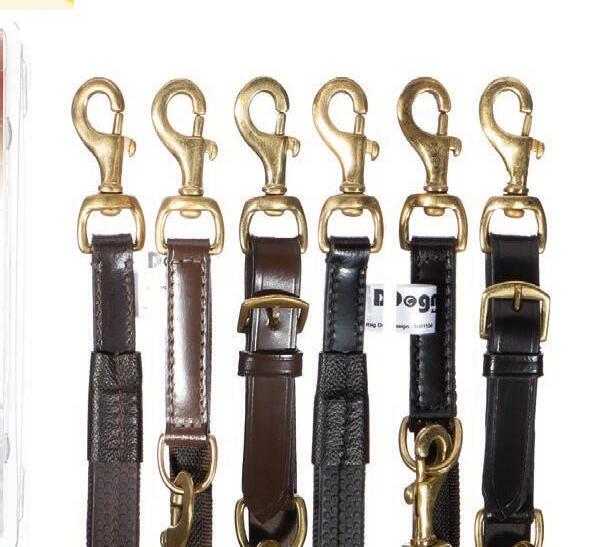
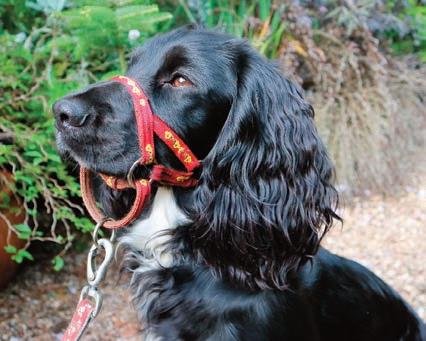
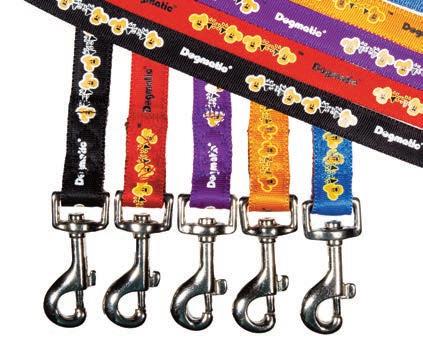
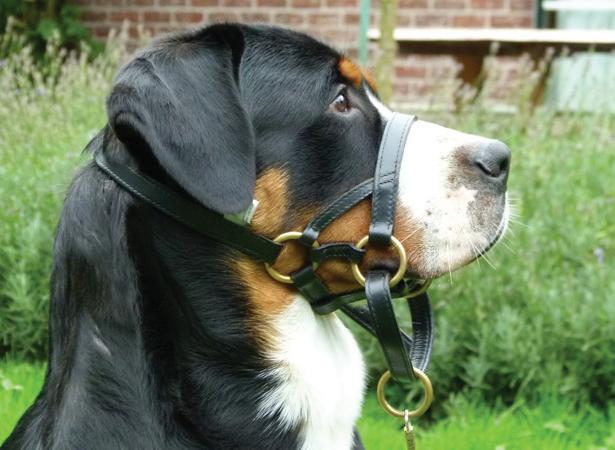
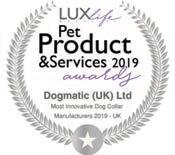

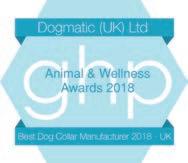




TERRESTRIAL VIVARIUMS DESIGNED FOR OPTIMAL VIEWING
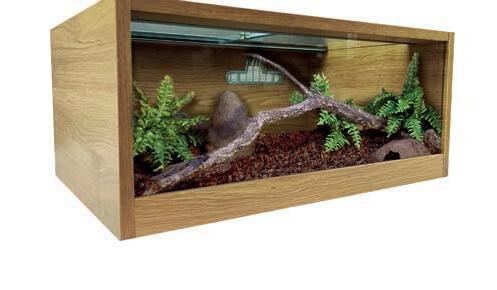

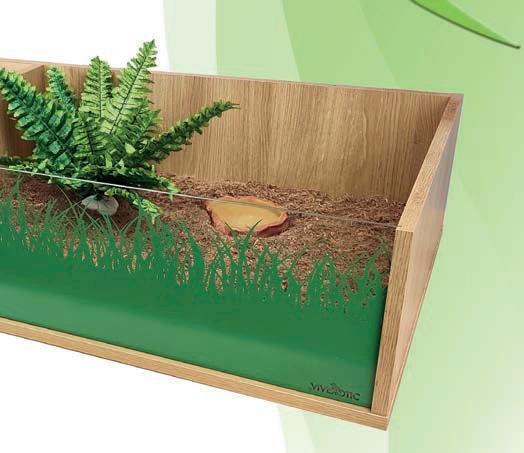
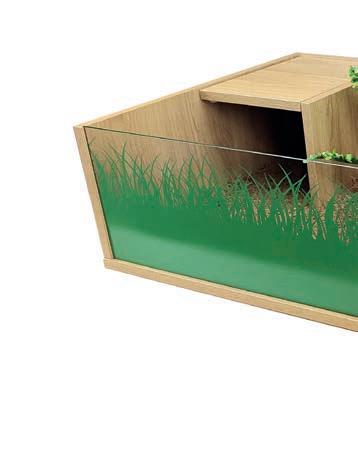


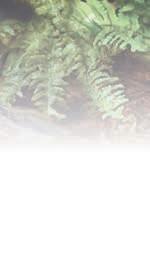
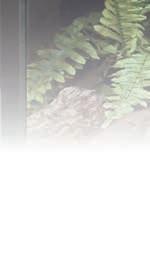


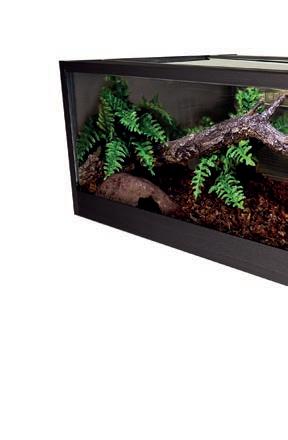
NEW DESIGN!

Replacing the Vivexotic Repti-view Vivariums
NUTRITIONNALY BALANCED DIET made with PREMIUM SEEDS SUPPLEMENTED with Tropican ENRICHED with Vitamins
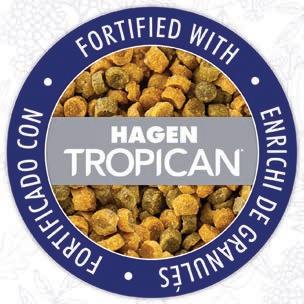
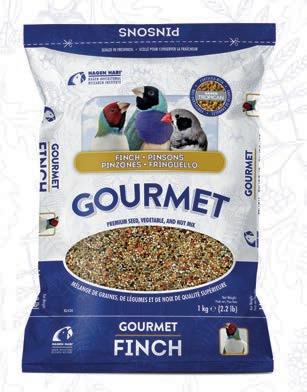
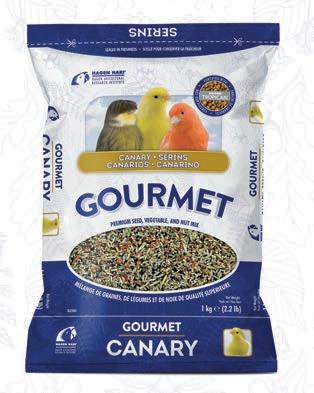




AVAILABLE IN SMALL AND MEDIUM
TM





Tortoise Table
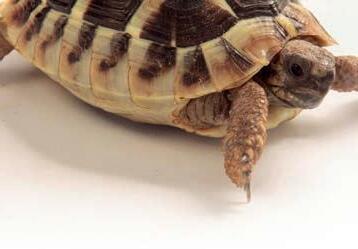
For more information contact your Hagen Sales Manager or call 01977 556622
STAINLESS STEEL FOUNTAIN TOP




NEW DESIGN! Available in 3 colours Fits the Vivexotic medium cabinets!










Replacing current Tortoise Tables


Upgrade your Catit PIXI coloured fountains with this hygienic stainless steel top!
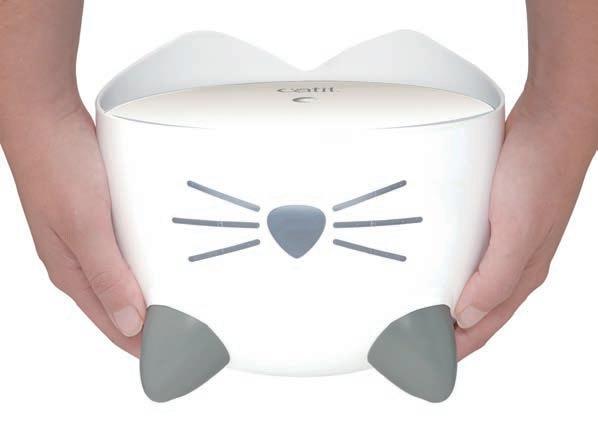
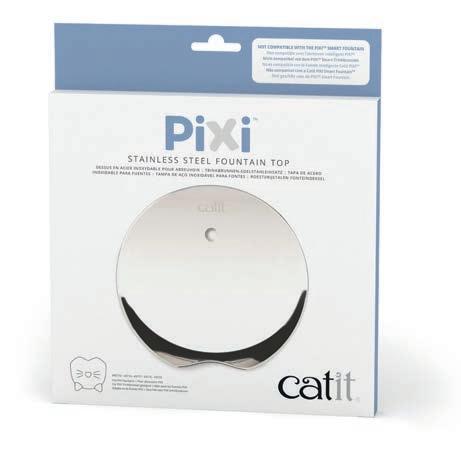
HYGIENIC AND DISHWASHER-SAFE!
